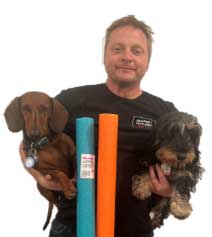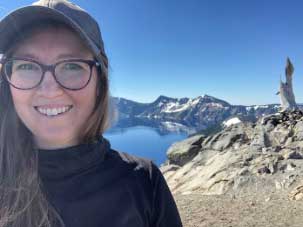2024-2025 Corporate Sponsors
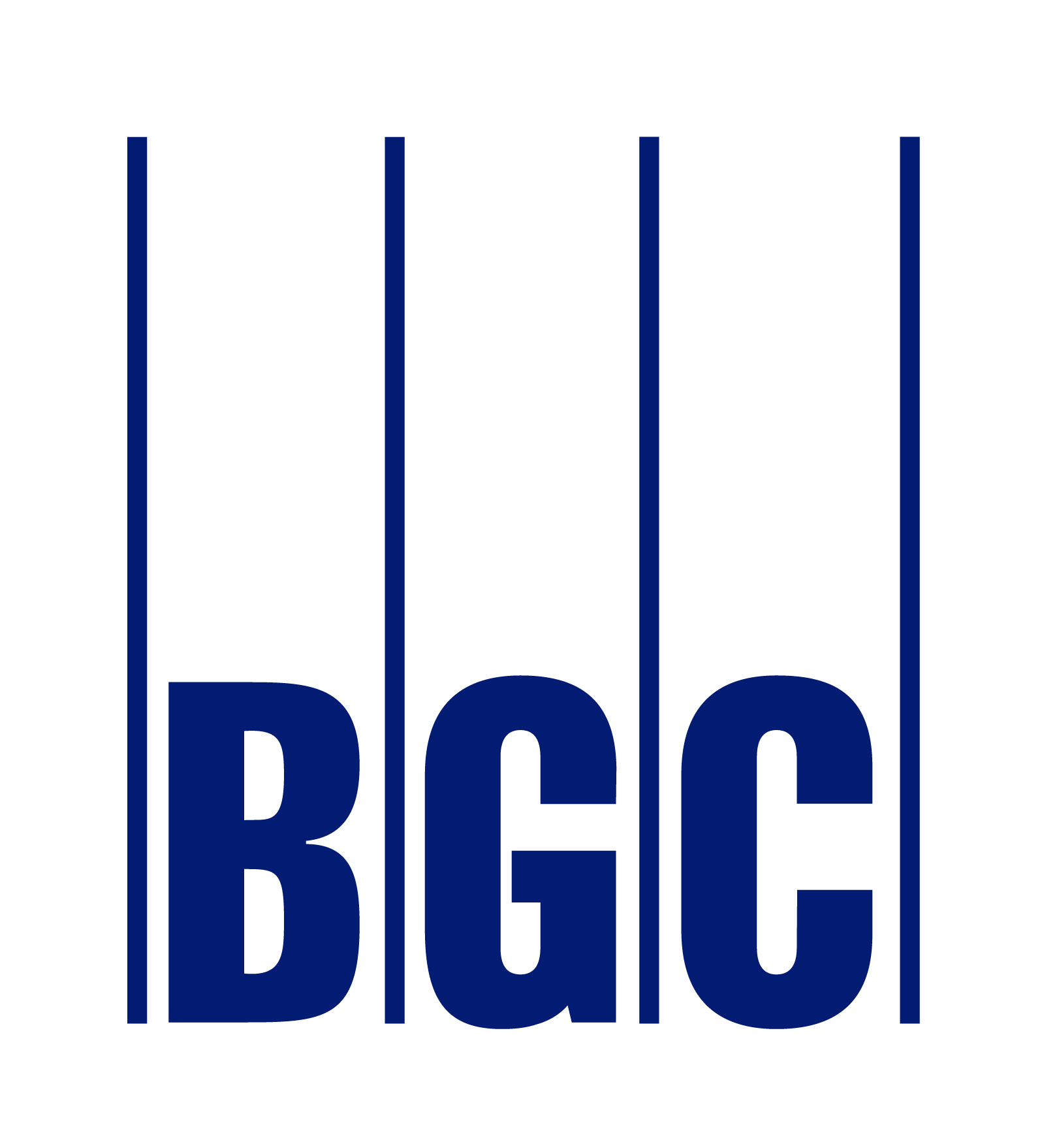






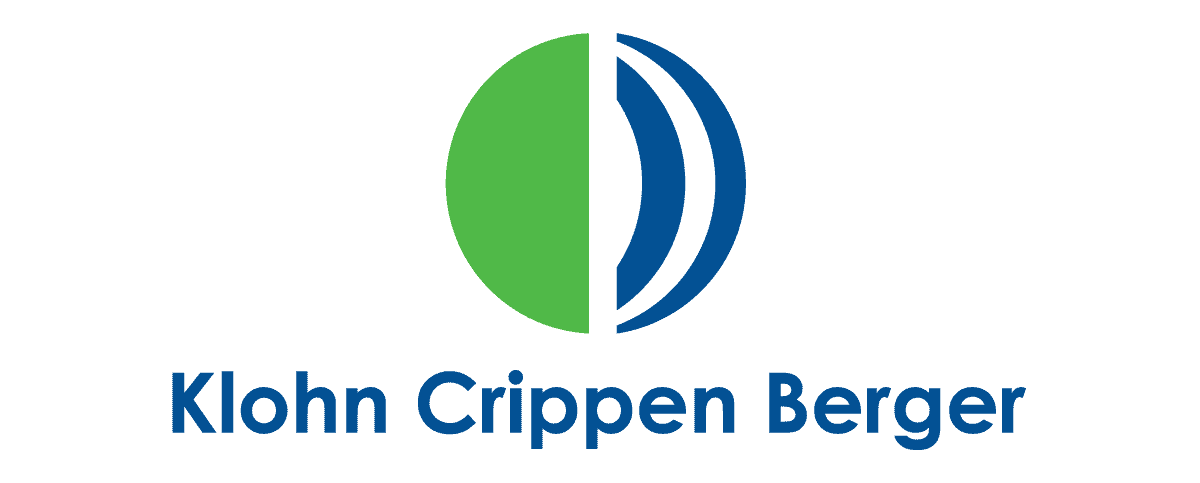


Current Event
CYGS Presentation (December 6, 2024) : Dr. Clarence Choi
The Calgary Geotechnical Society is excited to have Dr. Clarence Choi, Assistant Professor with the Department of Civil Engineering at the University of Hong Kong.
You may join the presentation virtually (free) or in person at the Wild Rose Brewery – Barracks Rooms, which includes Holiday Happy Hour (see details below).
If you are attending in person, we encourage you to wear something festive!
Please register by Friday, November 29.
**Please note that limited tickets will be available at the door on the day of the presentation, which can be purchased only with cash or cheque. We recommend registering for the event in advance to guarantee your spot.**
Topic: Engineered and Nature – Based Solution Against Debris Flow Hazards
Speaker: Dr. Clarence Choi
Date: Wednesday, December 4, 2024, 5:30pm – 8:00pm (MST)
Details: Virtual Only
5:30 pm to 6:15 pm – Technical Presentation
6:15 pm to 6:30 pm – Q&A
Details:
5:30 pm to 6:00 pm – Doors open, networking & registration
5:30 pm to 6:15 pm – Technical Presentation
6:15 pm to 6:30 pm – Q & A
6:30 pm to 8:00 pm – Holiday Happy Hour
Cost: $10 (Regular) / Free (Student)
Location Virtual: Zoom
Location: In Person
Wild Rose Brewery – Barracks Rooms
4580 Quesnay Wood Dr SW, Calgary, AB T3E 7J3
(***Parking and entrance in the back***)
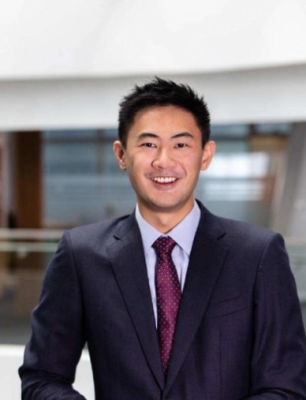
ABSTRACT:
The combined stress of human encroachment on hillsides and the increase in heavy rainfall, as reported by the UN Intergovernmental Panel on Climate Change, will increase the threat posed by landslides, which annually cause about US$4 billion in damage and 3,000 deaths globally. Debris flows, mixtures of soil and water surging downslope at high speeds, account for about 50% of the fatalities. In May 2024, a debris flow event buried 2,000 people in Papua New Guinea. Over recent years, a significant amount of research and development work has been carried out in Hong Kong to advance existing art on engineered solutions to mitigate debris flow hazards. This talk will share the details of how the Universities in Hong Kong have collaborated with the HKSAR Government to streamline the design of physical rigid and flexible barriers to resist impact forces, the story of how the practical design of baffles (i.e., structural columns used to impede boulders) has progressed through research and development, and the progress on high-fidelity modelling of debris material propagating through forests with and without uprooting using physical modelling and hybrid numerical modelling. Insights on advancements in image analysis and instrumentation will also be shared.
BIO:
Clarence is a geotechnical engineer and researcher in the Department of Civil Engineering at the University of Hong Kong. His research focuses on developing engineered and nature-based solutions against flow-type landslide hazards, and decarbonization in ground improvement and land reclamation. His research has been used to formulate nine design guidelines by the HKSAR Government. Recently, he was awarded the 3rd Hutchinson Lecture by FedIGS, the 2nd Oldrich Hungr Lecture by ICL, the 2023 R.M. Quigley Award by the CGS, and the 2023 Outstanding Young Engineer in Hong Kong by HKIE for his contribution to the development of Hong Kong. He serves as Associate Editor of the Canadian Geotechnical Journal and Editorial Board Member of Landslides and Engineering Geology.
Past Events
2024-2025
CGS Fall CCLT Presentation (November 6, 2024):
Professor Jocelyn L. Hayley
The Calgary Geotechnical Society is excited to host the Fall Cross Canada Lecture Tour (CCLT) featuring Jocelyn Hayley, Professor (Geotechnical) at the University of Calgary Department of Civil Engineering.
This presentation will be hosted at the Wild Rose Brewery – Barracks Rooms. No virtual option is available for this presentation. Dinner will be provided.
Please register by Friday, November 1, 2024.
Please note that limited tickets will be available for sale at the door on the day of the presentation, which can be purchased with either cash or cheque, only. We recommend registering for the event in advance to guarantee your spot.
Topic: Shifting Ground: Permafrost Challenges in a Changing Canadian North
Speaker: Jocelyn L. Hayley, Ph.D., P.Eng., FEIC, FCAE
University of Calgary Department of Civil Engineering
Date: Wednesday, November 6, 2024, 5:30pm – 8:00pm (MST)
Details:
5:30 pm to 6:00 pm – Doors open, networking & registration
6:00 pm to 6:45 pm – Dinner
6:45 pm to 8:00 pm – Presentation & Q & A
Cost: $50 (Regular) / $20 (Student)
Location: Wild Rose Brewery – Barracks Rooms
4580 Quesnay Wood Dr SW, Calgary, AB T3E 7J3
Parking and entrance in the back
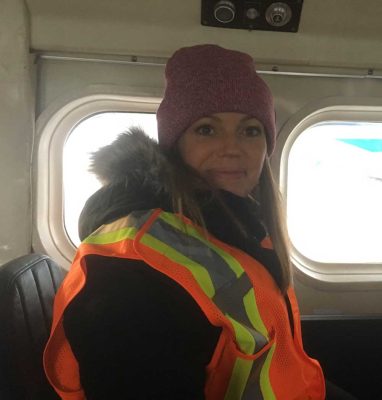
ABSTRACT:
The thawing of once-frozen permafrost is irrevocably altering the landscape of our Canadian North. As the once stable ground shifts and moves, overlying infrastructure is subject to damage; imminently threatening our ability to connect communities, provide stable housing, and protect our Arctic. Amplified temperature rise, accompanied by volatile weather patterns, impacts the fragile permafrost ecosystem adding uncertainty to our social, economic, and environmental future. Recent case histories help us understand the current state of practice in permafrost geotechnical engineering: the innovations; the challenges; and the opportunities, while the formation of extended and inclusive communities of practice and co-development of knowledge set the scene for a vibrant future as we explore forward-looking climate adaptation and continued sustainability in our Canadian North.
BIO:
Jocelyn is a Professor (Geotechnical) in the Department of Civil Engineering at the University of Calgary. She holds a BSc in Civil Engineering, a PhD in Geotechnical Engineering from the University of Alberta, and a Post Doctoral Fellow from the Norwegian Geotechnical Institute. Her research focuses on understanding how to mitigate and adapt to the impact of climate change in permafrost and offshore sediments, with a focus on soil behaviour. She has been recognized with a Fellowship in the Engineering Institute of Canada and Canadian Academy of Engineering, awarded the EIC Canadian Pacific Railway Engineering Medal, the APEGA Women in Engineering and Geoscience Champion Award, and delivered the 2022 Canadian Geotechnical Society Hardy Address. Jocelyn has also served in academic leadership positions, including Head of Civil Engineering and Senior Associate Dean of Research.
October CyGS Presentation (October 16, 2024):
The Calgary Geotechnical Society is excited to have Sam Tims, P.Geo., Senior Consultant, at SRK Consulting.
This presentation will be hosted at the Wild Rose Brewery – Barracks Rooms. No virtual option is available for this presentation. Light refreshments and appetizers will be provided.
Please register by Friday, October 11.
Please note that limited tickets will be available at the door on the day of the presentation, which can be purchased only with cash or cheque. We recommend registering for the event in advance to guarantee your spot.
Topic: Using Machine Learning for Rock Mass Classification
Speaker: Sam Tims, P.Geo.
Date: Wednesday, October 16, 2024, 5:30pm – 7:15pm (MST)
Details:
5:30 pm to 6:00 pm – Doors open, networking & registration
6:00 pm to 6:45 pm – Technical Presentation
6:45 pm to 7:00 pm – Q & A
Cost: $10 (Regular) / Free (Student)
Location: Wild Rose Brewery – Barracks Rooms
4580 Quesnay Wood Dr SW, Calgary, AB T3E 7J3
(Parking and entrance in the back)
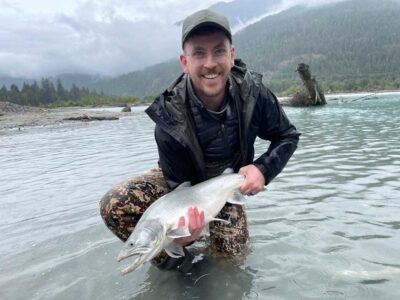
ABSTRACT:
This talk will provide an overview of the intentions behind rock mass classification, considerations for the design of open pit and underground mines, and the necessity of developing machine learning workflows to improve the density of geotechnical data. Rock is a fundamentally anisotropic material at all scales affected by geological controls including lithology, structures, alteration, and weathering. Predicting the performance of open pit and underground excavations relies on simplifying this complexity to domains of similar material properties, whereby empirical and numerical methods can be applied to establish a design. The controls on the stability of excavation are often dependent on the weakest element, whether these are faults or weakening alteration for example. Understanding the spatial distribution and inherent variability of the geological materials is critical to establishing safe and feasible designs.
Rock geotechnical data is often limited to a small number of dedicated drillholes, with supplementary information of variable quality logged during exploration programs. Supplementing this data with additional information is important to understanding the potential for weak areas in the rock mass. This improves the reliability and confidence of the geotechnical domain model and helps improve the quality of analysis by focusing on feasible failure modes.
BIO:
Sam Tims is a Senior Consultant with SRK Consulting with over 12 years of experience in the minerals industry in operations and consultancy. His specialty is field data collection, geotechnical characterization, open pit design, underground design, and operational assistance, with experience gained over five continents and spanning various metals, gemstones, and industrial minerals in open pit and underground mines. Sam uses Python for data processing and visualization to inform the geological and geotechnical domain models he creates in Leapfrog Geo.
September CyGS Presentation (September 11, 2024):
Tanys MacGowan, Beryl Mining Services Ltd.
“Past, Present, and Future Perspective of an EOR, Take 2”
The Calgary Geotechnical Society is excited to host Tanys MacGowan, P.Eng., Principal Advisor, Geotechnical Engineering at Beryl Mining Services. This will be the first presentation to kick off the 2024/2025 season!
This presentation will be hosted at the Wild Rose Brewery – Barracks Rooms. No virtual option is available for this presentation. Light refreshments and appetizers will be provided.
Please register by Friday, September 6.
Dr. Marc Ballouz, President of the International Society for Soil Mechanics and Geotechnical Engineering (ISSMGE) will also present Dr. Norbert Morgenstern with the prestigious ISSMGE Lifetime Achievement Medal. Please join us in person in congratulating Dr. Morgenstern for his incredible dedication and contribution to the geotechnical community over the decades
Please note that limited tickets will be available at the door on the day of the presentation, which can be purchased only with cash or cheque. We recommend registering for the event in advance to guarantee your spot.
Topic: Past, Present, and Future Perspective of an EOR, Take 2
Speaker: Tanys MacGowan, P.Eng., Principal Advisor,
Geotechnical Engineering at Beryl Mining Services
Date: Wednesday, September 11, 2024, 5:30pm – 7:15pm (MST)
Details: 5:30 pm to 6:00 pm – Doors open, networking & registration
6:00 pm to 6:20 pm – ILAM Award Presentation to Dr. Norbert Morgenstern
6:20 pm to 7:00 pm – Technical Presentation
7:00 pm to 7:15 pm – Q&A
Cost: $10 (Regular) / Free (Student)
Location: Wild Rose Brewery – Barracks Rooms
4580 Quesnay Wood Dr SW, Calgary, AB T3E 7J3
(***Parking and entrance in the back***)
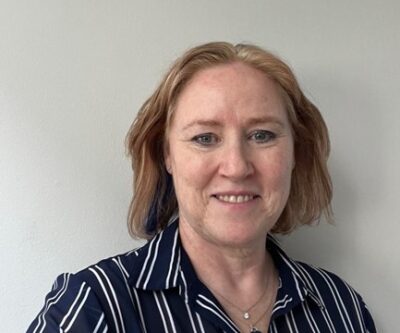
ABSTRACT:
As the adage goes, those who don’t remember history are doomed to repeat it. This perspective is imperative in our industry, where building on past experiences – the learnings, the re-learnings, and the mistakes – shapes our present and forms a foundation for a safe and sustainable future. Join me as I reflect on the oilsands industry’s progression over time, detailing projects and learnings that have directly influenced my career, and identifying drivers for a more stable, socially responsible, risk-informed future.
BIO:
Tanys MacGowan, P.Eng. is a seasoned geotechnical expert with over 25 years of experience with 17 years in the oil sands industry, and 15 of them representing the Operator Company. She has held roles as Engineer of Record (EOR), Geotechnical Engineering Advisor and Directors of GeoServices and Digital Innovation at Suncor Energy Inc., overseeing the geology, water resources, and geotechnical engineering groups, with oversight of approximately 80 technical people in the group. In her last role as the Director of Digital Innovation at Suncor, she drove innovative digital data strategies, including developing digital twins to improve geotechnical risk management.
During her time as an EOR, she managed the design of one of the largest dam structures in the oil sands at 140 m in height, 50 to 70 m above natural ground. She was at the forefront of solving the complex design issues associated with constructing Suncor’s first sand storage structure and removing a tailings pond to access ore under the tailings facility. Consequently, she authored one of the first approved dam decommissioning plans. She has co-authored papers covering pit walls, dams, dam breach emergency response, and a summary paper on 50 years of geotechnical engineering in the oilsands.
She is currently a Principal Advisor, Geotechnical Engineering, at Beryl Mining Services where her passion is continuing to work on advancing risk management through governance, education, and digital and data advancements with integrated plans and operations.
In her spare time, she is fascinated with the psychology behind leadership and has taken courses at Harvard, Oxford and MIT. In addition, she loves kickboxing, travelling, entertaining and the color blue.
2023-2024
CGS Spring CCLT Presentation (June 13, 2024):
Dr. Ellen M. Rathje, University of Texas at Austin
The Calgary Geotechnical Society (CyGS) is excited to host Dr. Ellen M. Rathje, Ph.D., P.E., F.ASCE. from the University of Texas at Austin, for the Canadian Geotechnical Society (CGS) Spring Cross Canada Lecture Tour (CCLT). The CCLT is made possible by the funding support from The Canadian Foundation for Geotechnique.
This presentation will be hosted at the Croatian Canadian Cultural Centre. No virtual option is available for this presentation.
Please register by Thursday, June 6, 2024.
Please note that limited tickets will be available for sale at the door on the day of the presentation, which can be purchased with either cash or cheque, only. We recommend registering for the event in advance to guarantee your spot.
Topic: New Approaches for Evaluating the Seismic Performance of
Slopes & Earth Dams
Speaker: Dr. Ellen M. Rathje, Ph.D, P.E., F.ASCE
University of Texas at Austin
Date: Thursday, June 13, 2024, 5:30pm – 8:00pm (MST)
Details: IN PERSON EVENT SCHEDULE (all times listed in MST)
5:30 to 6:00 pm: Arrival, registration, cash bar and networking
6:00 to 6:45 pm: Buffet dinner
6:45 to 8:00 pm: Presentation and Q&A
Cost: $50 (Regular) / $20 (Student)
Location: Croatian Canadian Cultural Centre
Register here: Register Here
ABSTRACT:
Seismic performance assessments for earth slopes and dams are based on evaluating the permanent displacements induced by earthquake shaking and more recently probabilistic approaches have been proposed to incorporate uncertainties into the analysis. This presentation will describe newly developed predictive models for earthquake-induced slope displacements based on finite element simulations. The models are developed using both classical regression techniques and artificial neural networks (ANN), and models for both the median displacement and its variability are provided. A missing part of most seismic performance assessments for slopes and dams is the translation of a displacement level into a damage state.
This presentation will also outline a seismic fragility framework for earth dams and slopes that is modeled after the approaches used for other types of infrastructure, such as bridges. The framework uses an engineering demand model to predict the permanent displacement as a function of ground motion intensity, and a seismic capacity model to predict the probability of a damage state given the permanent settlement.
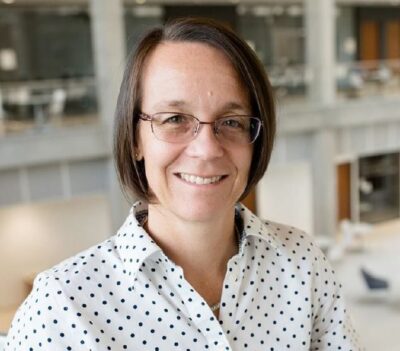 BIO:
BIO:
Dr. Ellen M. Rathje is the Janet S. Cockrell Centennial Chair in Engineering in the Fariborz Maseeh Department of Civil, Architectural, and Environmental Engineering at the University of Texas at Austin (UT), and a Senior Research Scientist at the UT Bureau of Economic Geology. She is an acknowledged expert in the areas of seismic site response analysis, seismic slope stability, induced seismicity, and field reconnaissance after earthquakes. Dr. Rathje is a founding member and previous Co-Chair of the Geotechnical Extreme Events Reconnaissance (GEER) Association, and currently the Principal Investigator for the DesignSafe-ci.org cyberinfrastructure that supports research in natural hazards engineering.
She has been honored with the 2022 Peck Lecture Award from the ASCE Geo-Institute, the 2018 William B. Joyner Lecture Award from the Seismological Society of America and the Earthquake Engineering Research Institute and the 2010 Huber Research Prize from the ASCE. She was elected Fellow of the American Society of Civil Engineers in 2016.
CyGS AGM & Presentation (May 14, 2024):
Andy Small, M.Sc., P.Eng., FEIC
Speaker(s): Andy Small, M.Sc., P.Eng., FEIC
Topic: What could Tailings Facility Engineering look like in 2030?
Date: May 14, 2024
Location: Croation Canadian Cultural Centre
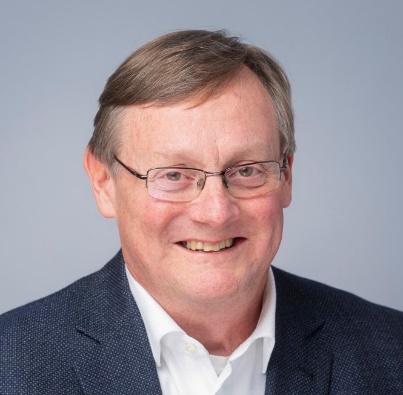
BIO:
Andy Small, P.Eng, is a geotechnical engineer that has specialized in dam safety and dam design for over 30 years. He is a geotechnical engineer, graduating from the University of New Brunswick with a B.Sc. in 1985 and a Masters from the University of Alberta in 1989. He works for Klohn Crippen Berger and is based in Fredericton, New Brunswick. Andy is the engineer of record for several tailings facilities across Canada and has worked on several international projects. He has been an active member of the CDA for over 25 years, was the lead author of the Mining Dams Bulletin that was issued in 2014, and has developed or been involved with several additional guidance documents related to tailings dam safety since then. In 2022 and 2023, Andy chaired ICOLD’s tailings committee and was one of the contributing authors to ICOLD’s Tailings Dam Safety Guidelines.
CyGS In-Person Event
Speaker(s): Mike O’Kane, P.Eng., M.Sc., MAusIMM, GCB.D
Topic: Application of Unsaturated Soil Mechanics in the Mining Industry…
and other Gardening Tips
Date: Wed, April 24, 2024
Location: Wild Rose Taproom
Bio: Mike O’Kane, P.Eng., M.Sc., MAusIMM, GCB.D, founded Okane Consultants (Okane) in 1996, a company providing integrated mine planning, closure, and relinquishment solutions to the mining industry internationally. Mike is the chair of Okane’s Board of Directors, and continues to work within Okane as a senior technical advisor using his wide-ranging technical expertise and knowledge on risk management best practices as tools for development and communication of integrated closure planning and project specific objectives and designs. He is a recognized subject matter expert in cover system and landform design, and application of unsaturated zone hydrology and geochemistry, for mine waste management. Mike is a director of the Landform Design Institute and chair of its Technical Advisory Panel. He holds a Global ESG Competence Boards Designation.
In 2014 Mike received the University of Saskatchewan Alumni Achievement Award for “Global Development of his Business and Corporation, and Philanthropy”
Abstract: The mining industry, as a result of resource recovery, produces mine rock / overburden, mine tailings, and spent heap leach material. Cover systems are often considered, amongst several technologies, for preventing, and mitigating potential adverse impact to surface water and groundwater resources, while also providing an interface between the landform containing these products and the atmosphere. Cover system functionality is intimately linked to the landform, and vice versa; as such, both are foundational to Land stewardship.
This presentation offers a perspective, gained from nearly 30 years of experience, to explore whether cover systems, and water treatment of mined landform effluent, are ‘proven technologies’ for managing source, pathway, and receptor water flow and quality risk arising from landforms created in the mining industry. Case study examples will be used to illustrate cost effective enhanced solutions for managing tomorrow’s water flow and water quality risk, today, while incorporating a Land stewardship perspective at all stages of the mine-life-cycle.
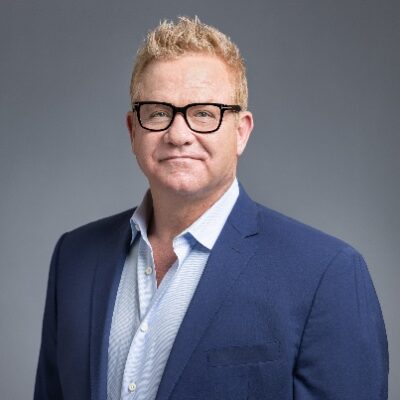
CyGS Technical Talk (March 6, 2024): Jeanine Engelbrecht, Ph.D.
Speaker(s): Jeanine Engelbrecht, Ph.D.
Topic: Echoes from space: measuring millimeters on earth from 700 km above
Date: Wed, March 6, 2024
Location: Croatian Cultural Centre
Bio: Jeanine Engelbrecht is a Senior Remote Sensing Specialist and the co-lead of BGC Engineering’s Data Science and Earth Observation team. She has 20 years of experience in remote sensing applications development with a focus on synthetic aperture radar (SAR) and Interferometric SAR (InSAR). She graduated with a Ph.D. in Electrical Engineering from the University of Cape Town, for a research project that focused on deriving InSAR displacement data in operational mining environments. She developed advanced quantitative geospatial analysis skills for geological applications, water resources management, hazard and risk assessment, as well as natural resources and environmental monitoring. At BGC, she is involved in a variety of projects that analyze InSAR data in conjunction with survey and instrumentation data for geotechnical risk management and hazard assessment.
Abstract: Since the first use of InSAR data to map the ground displacement caused by the 1992 Landers earthquake in California, algorithms for extracting high-precision measurements of surface displacement from SAR data have evolved rapidly. This is primarily due to improvements in satellite and sensor technology to capture the raw data used for InSAR analysis, combined with the development of sophisticated processing algorithms exploiting high-performance computing infrastructure. Given the ability to monitor cm to mm-scale ground displacement with high-precision, InSAR data have become a standard addition to hazard management programs dedicated to the monitoring of large engineering works (such as dams, tailings storage facilities and open-pit mines) and geotechnical hazards impacting infrastructure networks.
This presentation will explore the fundamental concepts of SAR data, focusing on the technical considerations involved in InSAR monitoring program design including: i) sensor characteristics (i.e. wavelength, acquisition geometry, acquisition modes and revisit intervals), ii) site characteristics (such as climate and landcover), and iii) the nature of the anticipated displacement (movement rates, extent, and orientation). Through real-world examples of using InSAR data as part of geotechnical monitoring and assessment programs, the operational limitations of InSAR data with a focus on what can and can’t be measured, will be considered. Upcoming sensors and future opportunities will also be explored.
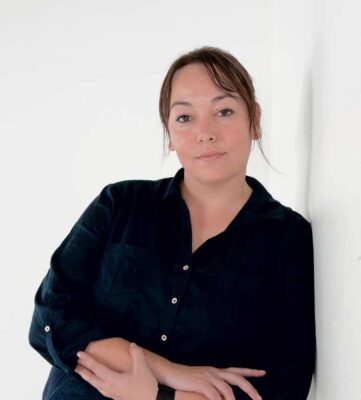
CyGS Student Industry Mixer (March 21, 2024)
On March 21, we will be hosting a Student Industry Mixer featuring two technical presentations and a panel discussion. The technical presentations will feature an industry perspective from Dr. Sam Proskin (Thurber Engineering) and a talk from our 2023 CyGS Student Award Winner Zakieh Mohammedi (University of Calgary) on evaluating thaw settlement in permafrost regions. The panel discussion will be moderated by Lilianne Landry-Pare, featuring our two speakers and Justyna Kos-Fairless (Suncor) will highlight the diverse career paths available to student geoscientists and geotechnical engineers and on confronting potential future career challenges for students and industry professionals. Networking bingo will kick-off our event, with industry sponsored prizes for bingo winners! You won’t want to miss this!
Speaker/panelist(s): Sam Proskin, P.End., Ph.D, Zakieh Mohammedi (Ph.D. candidate at the University of Calgary), Lilianne Landry-Pare (P.Eng., Hatch), Justyna Kos-Fairless (P.Eng., Suncor)
Topic: Designing in permafrost, Ice-road design and monitoring, diverging career paths and confronting career challenges
Date: Wed, March 21, 2024
Location: Aloft Calgary University
Thank you! Please reach out to Alex Lowe, alex.lowe@terrafixgeo.com for any questions on the above.
CyGS Presentation Wed, Jan 24, 2024 5:30 PM – 7:30 PM MST Wild Rose Brewery**
Caius Priscu, Ph.D, P.Eng**
Can tailings dam safety management professionals learn from the maritime industry failures? – Heck yes!
The Calgary Geotechnical Society is excited to host a presentation with Caius Priscu, Ph.D, P.Eng from Priscu and Associates Consulting Engineers Inc., West Vancouver, BC, Canada and Adjunct Professor, Norman B. Keevil Institute of Mining Engineering, UBC.
Register in advance for the meeting: Eventbrite
 SPEAKER: Dr. Caius Priscu, P.Eng, is Co-Founder and Principal Geotechnical Engineer with Priscu and Associates Consulting Engineers Inc., based in West Vancouver, BC, Canada. He has over 30 years of experience in the mining and water resources industries across the world, specializing in mine waste management, dam safety and portfolio risk management for tailings and water retaining dams, corporate Governance, standards, and policies. From 2013 to 2021 he was the global head of mineral residue facilities and water management at Anglo American, which at that time had hundreds of TSFs and water retaining dams in the portfolio. He holds an M.Sc degree in Hydraulic Structures from the Civil Engineering Institute of Bucharest, Romania, an M.Eng in Civil (Geotechnical) Engineering and a Ph.D in Mining Engineering, both from McGill University in Montreal. Caius is also a tireless and passionate volunteer and true supporter of many technical not-for-profit organizations, including the CDA, MAC, CIM, SME, and ICOLD. He is a past member of the International Council on Mining and Metals (ICMM) tailings working group (TWG) and its working subcommittees, contributing to the development of the ICMM Tailings Management Good Practice Guide (2021), and the ICMM Conformance Protocols for GISTM Implementation (2021). In 2023, he was one of the two recipients of the CDA Peter Halliday Award for Service for his valued contributions and outstanding commitment to the advancement of the Association. When not working, volunteering, or teaching at UBC, Caius enjoys his hobbies of cooking yummy dishes inspired from his world travels and listening to some great live music.
SPEAKER: Dr. Caius Priscu, P.Eng, is Co-Founder and Principal Geotechnical Engineer with Priscu and Associates Consulting Engineers Inc., based in West Vancouver, BC, Canada. He has over 30 years of experience in the mining and water resources industries across the world, specializing in mine waste management, dam safety and portfolio risk management for tailings and water retaining dams, corporate Governance, standards, and policies. From 2013 to 2021 he was the global head of mineral residue facilities and water management at Anglo American, which at that time had hundreds of TSFs and water retaining dams in the portfolio. He holds an M.Sc degree in Hydraulic Structures from the Civil Engineering Institute of Bucharest, Romania, an M.Eng in Civil (Geotechnical) Engineering and a Ph.D in Mining Engineering, both from McGill University in Montreal. Caius is also a tireless and passionate volunteer and true supporter of many technical not-for-profit organizations, including the CDA, MAC, CIM, SME, and ICOLD. He is a past member of the International Council on Mining and Metals (ICMM) tailings working group (TWG) and its working subcommittees, contributing to the development of the ICMM Tailings Management Good Practice Guide (2021), and the ICMM Conformance Protocols for GISTM Implementation (2021). In 2023, he was one of the two recipients of the CDA Peter Halliday Award for Service for his valued contributions and outstanding commitment to the advancement of the Association. When not working, volunteering, or teaching at UBC, Caius enjoys his hobbies of cooking yummy dishes inspired from his world travels and listening to some great live music.
TOPIC: An integral part of a high-quality tailings storage facility (TSF) safe management is to look at “what if” scenarios, be prepared to respond in cases when things do not go according to plan. Operational readiness, training, corporate culture, responsibilities, and emergency planning all converge to ensure we are prepared for unforeseen situations and mitigate the risks appropriately and to a full extent.
In this presentation, a parallel is drawn to some real-life case studies of catastrophic failures from the maritime industry and its own unfortunate events, and what we – in the mining industry – could learn from. The parallel discusses causation from both a technical and a human performance perspective. Furthermore, the presentation discusses how ill-defined, uninformed, decision-making processes resulted in such tragedies or impacted the outcomes and consequences of unwanted events the maritime industry has seen in the last couple of decades.
A discussion on the recent Global Industry Standard on Tailings Management (GISTM) and some select group of its requirements may help the mining industry avoid similar situations learned from the maritime industry. The presentation will also discuss the clear need for a genuine corporate safety culture and the fact that the mining industry is still human-centric when it comes to dealing with mother nature and its elements in the natural resources industry, no matter how much technology, automation, and AI is being implemented. At least for now.
Thank you! Please reach out to Alex Lowe, alex.lowe@terrafixgeo.com for any questions on the above.
CyGS Virtual Presentation Wednesday, December 6, 2023
Doug Dewar, M.Sc., P.Eng., and Nicki Robertson, Ph.D., P.Eng to discuss Modern Pipelines and Landslide Hazards: An Operator’s Perspective.
The Calgary Geotechnical Society is excited to host a virtual presentation with Doug Dewar and Nicki Robertson from Pembina Pipelines.
SPEAKERS: Doug Dewar is currently the Senior Staff Engineer at Pembina Pipelines working with a team of internal professionals and consultants to implement a geohazard management program for approximately 19,000 km of pipelines in Alberta, Saskatchewan, British Columbia, and the plains of the U.S.A. He graduated from the University of New Brunswick with a Bachelor’s of Science in Geological engineering and the University of Alberta with a Master’s of Science in Geotechnical Engineering. Doug initially worked in consulting for 7 years focusing on landslides and terrain stability for the forest, mining, and pipeline industries before transitioning to working for pipeline operators for the last 20 years.
Nicki Robertson is currently the Supervisor of Pipeline Integrity Management at Pembina Pipelines. She obtained her bachelors in Composite Materials Engineering from Winona State University followed by her doctorate in Materials Engineering from the University of Alberta. She has worked in the pipeline industry for 15+ years through academic research, consulting and now as a pipeline operator. Nicki is a passionate about improving pipeline safety by her commitment to work, as well as Code Committees such as CSA and involvement with pipeline related conference such as International Pipeline Conference.
TOPIC: Modern Pipelines and Landslide Hazards: An Operator’s Perspective.
On February 12, 2020 the Canadian Energy Regular (CER) issued Safety Advisory SA 2020-01 to all CER-regulated companies to ensure an awareness of landslide related incidents outside of Canada associated with girth welds on modern high-strength pipelines. The CER stated “while no incidents associated with this type of failure have been reported in Canada, the CER is of the view that similar incidents could occur under comparable conditions.”
Most reported landslide related pipeline failures in Canada are in zones of compression at the toe of slopes in movements parallel to the pipeline. The authors provided a presentation at a CER workshop to explain why Canadian pipelines are less vulnerable to this threat than US pipelines. The presentation details the current state of art for screening for hazards and assessing the fitness for service of pipelines in landslides focusing on tensile failures.
The CyGS presentation is an expanded CER talk with additional background and explanations of this emerging threat for geotechnical and pipeline integrity professionals. If anything, Nicki and Doug will entertain you!
CyGS Presentation (November 22) – Heather Brooks, PhD, PEng
The Calgary Geotechnical Society is excited to host Heather Brooks, Senior Civil/Geotechnical Engineer from BGC Engineering.
This presentation will be hosted at the Wild Rose Taproom – Barracks Room. No virtual option is available for this presentation. Light refreshments and appetizers will be provided.
Please register by Wednesday, November 15, 2023.
SPEAKER: Heather has Alaskan roots but settled in Canada. She completed her bachelor’s and master’s in civil engineering from Montana State University. She worked for Duane Miller Associates and Golder Associates in Anchorage Alaska for 5 years, where she found her love of cold regions geotechnics and permafrost. In 2014 , she moved to Quebec, learned some French and completed her PhD focusing on risk assessment in permafrost under the direction of Ariane Locat and Guy Dore. She joined BGC in 2018 and has continued to work in multiple fields including cold regions. She is an avid knitter, swing dancer and cat servant. She is striving to connect Alaskan and Canadian permafrost engineers through multiple professional organizations including, CPA, USPA, CGS, and ASCE.

TOPIC: Permafrost in Complex Topography: The need for and utility of 3D thermal modelling at Polychrome Pass, Denali National Park
The Pretty Rocks Landslide has been active for many years, but recently this rock glacier accelerated to the point that maintenance activities could not keep up with the landslide’s movement and in 2021 the Denali Park Roadway was closed pas the landslide. Since early 2021, BGC has been involved in the site investigation and design of a 475-foot, single-span bridge over the landslide. This presentation will focus on one abutment of the bridge. At this location, ice rich permafrost underlays intact rock materials, creating a risk to the design that needed to be investigated with a 3D thermal model.
CGS Fall CCLT Presentation (October 19) – M. Hesham El Naggar, PhD, PEng, FCAE, FEIC, FASCE
The Calgary Geotechnical Society is excited to host Prof. M. Hesham El Naggar, University of Western Ontario, in person as part of the Canadian Geotechnical Society (CGS) Fall Cross Canada Lecture Tour (CCLT). The CCLT is made possible by the support of the Canadian Foundation for Geotechnique.
This presentation will be hosted at the Croatian Canadian Cultural Centre. No virtual option is available for this presentation. Please register by Thursday, October 12, 2023.
Register in advance for the meeting: Click Here
SPEAKER: Dr. Hesham El Naggar is a Distinguished University professor and a world leader in foundation dynamics and geotechnical earthquake engineering. He advanced the state-of-the-art in analysis and design of foundations for dynamic loads. His innovative work on foundation dynamics led to the development of DYNA6, the industry-standard in machine foundation design. His work on foundation design and geotechnical earthquake engineering has been incorporated into design guidelines recommended by regulatory bodies and learned societies. He is Editor-In-Chief of Soil Dynamics and Earthquake Engineering and past Associate Editor of the Canadian Geotechnical Journal. He published more than 550 technical papers and book chapters including 400 in selective and prestigious journals on foundations, soil-structure interaction and geotechnical earthquake engineering; and consulted on major projects worldwide. He has delivered more than 50 plenary, keynotes and invited speeches at national and international conferences. Dr. El Naggar attracted more than $20M of research funding and graduated more than 120 PhD and Master students. In recognition of his outstanding research contributions, Dr. El Naggar received many prestigious awards including the Geosynthetics, Stermac, Meyerhof and Canadian Geotechnical Colloquium Speaker Awards from the Canadian Geotechnical Society; the Ontario Professional Engineers Medal for Engineering Research & Development; the prestigious 2021 Zhongguancun Award for Outstanding Contribution, from Beijing Council of Science and Technology; the Faculty Scholar Award, Outstanding Teaching, Research Excellence and Distinguished University Professor Awards from Western University. He is an elected Fellow of Canadian Academy of Engineering, the Engineering Institute of Canada and the American Society for Civil Engineers.
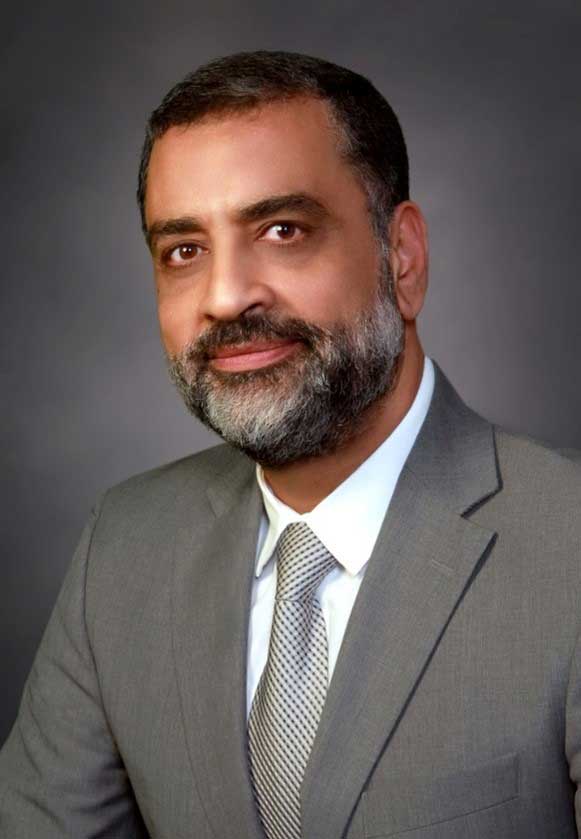
TOPIC: Helical Piles: Efficient Foundation for Static, Dynamic, and Seismic Applications
Helical piles have become a popular foundation option owing to their many advantages related to ease of installation and large load carrying capacity. They are typically manufactured of straight steel shafts fitted with one or more helices and are installed using mechanical torque. They can sustain static and dynamic loading and are increasingly used in applications that induce complex loading conditions on them. The behavior and design of single vertical helical piles subjected to static loading is well investigated. However, the dynamic and seismic behavior of single helical piles and their group behavior are of great importance in modern foundation engineering practice but not yet well understood. This presentation presents recent advances in evaluating the axial and lateral capacity and performance of single and grouped helical piles and their response to static, dynamic and seismic loads.
CyGS Presentation (September 22) – Marco Arrieta, P.Eng.
The Calgary Geotechnical Society is excited to host Marco Arrieta, Geotechnical Engineer from Teck Resources to kick off our 2023/24 season!
This presentation will be hosted at the Croatian Canadian Cultural Centre. No virtual option is available for this presentation. Light refreshments and appetizers will be provided. Please register by Friday, September 8, 2023.
Register in advance for the meeting: Click Here
SPEAKER: Marco Arrieta is a geotechnical engineer with over fourteen years of experience in the open pit mining industry. He currently leads the geotechnical department at Teck Resources – Line Creek Operation and is pursuing his Ph.D. diving in shear strength criterion for rock fills and waste dumps based on fractal dimension, chaos, and organized complexity. His areas of expertise include shear behavior in granular materials, fractals applied to granular materials, 3D modeling and rock mechanics.
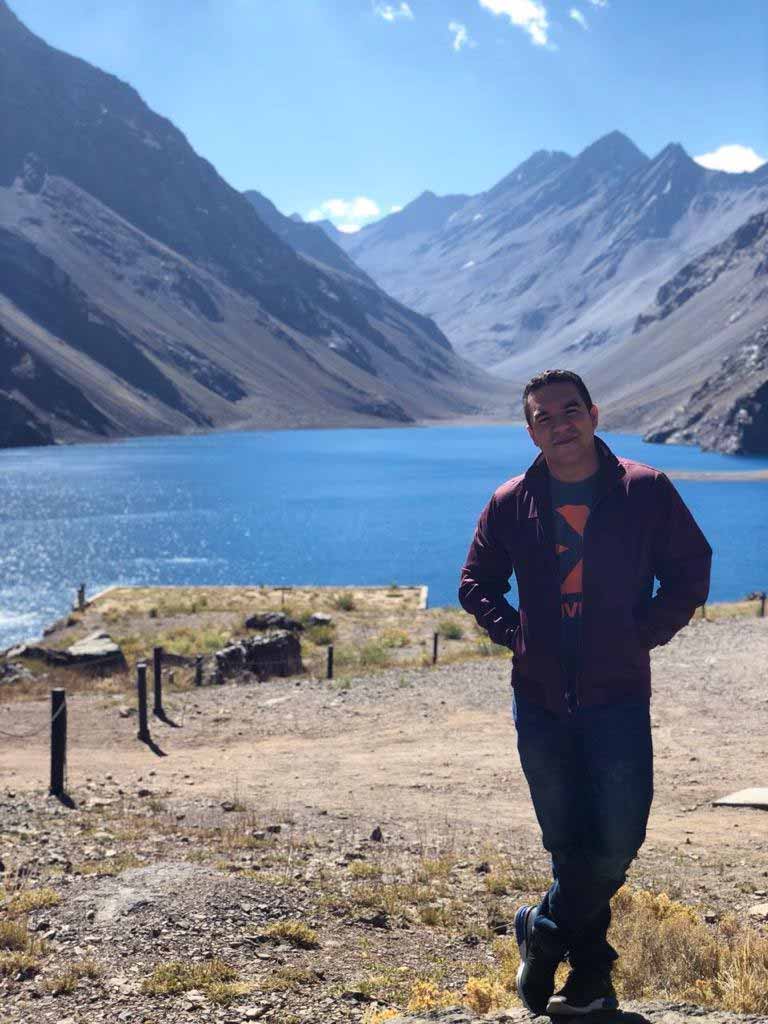
TOPIC: Waste dumps and rockfill shear strength characterization is a debate among the geotechnical community, and is considered a “hot” topic due to the complexity of the anisotropic behavior of the dumped/crushed material and lack of comprehension of the current and available tools such empirical methods (Barton and Kjaernsli, 1981) and Large Open Pit Waste Dumps Guidelines, 2017. During this talk, we will discuss the advantages and disadvantages of rockfill and waste dump shear strength characterization methods for applications available and developed since late 50’s to the date.
2022 -2023
CyGS AGM & Presentation (June 14) – Bob Saunders, M.Eng., P.Eng.
The Calgary Geotechnical Society is excited to host Annual General Meeting (AGM) on Wednesday, June 14, 2023, at the Croatian Canadian Cultural Centre. The AGM will include updates from our executives, a presentation of annual awards, and a keynote by Bob Saunders from Thurber Engineering.
This presentation will be hosted at Croatian Canadian Cultural Centre. No virtual option is available for this presentation. Please register by Friday, June 9, 2023.
Register in advance for the meeting: Click Here
SPEAKER: Bob is a Senior Associate and Senior Geotechnical Engineer with Thurber Engineering Ltd. and has worked in the Calgary office for over 17 years. He has a B.Sc. in Civil Engineering from the University of Calgary (1981) and a Master of Engineering in Geotechnical Engineering from the University of Alberta (1989). He has over 40 years’ experience in a wide range of geotechnical projects in Western and Northern Canada. Bob began his career in permafrost engineering and worked on several major northern pipeline projects including the Foothills Alaska Highway Gas Pipeline, the Norman Wells Pipeline, the Mackenzie Gas Project and the Alaska Pipeline Project. His Master’s project was on wheel ditcher productivity in permafrost.
Mr. Saunders’ main area of experience is with linear infrastructure projects (mostly pipeline), specializing in geohazard assessments and trenchless crossing design.

TOPIC: The Impact of Technology on Geotechnical Engineering: A 40-Year Perspective
We live in very interesting and exciting times. Technology continues to advance in amazing and unpredictable ways and yet some aspects of our lives remain relatively unchanged. Join Bob Saunders as he recaps his personal experience with changes in technology in (geotechnical) engineering over the past 40 years.
His personal career path began in a world just emerging from slide rules and dominated by not very powerful mainframe computers, typewriters, drafting with T-squares and Leroy, bluelines and mylar to CAD and FEA. Revisit the impact things we now take for granted like smartphones have had on our lives. Consider how we would function at the office today without the internet, email, Teams or Zoom. Is the next step in our career evolution to embrace artificial intelligence?
This talk is intended to be light and a bit reflective, but hopefully without the preaching of a crusty curmudgeon about the ‘good old days’. Bob will touch on some of the good, the bad and the ugly of the changes he has experienced, tempered with hints of where we might be heading, with some thoughts tossed in on staying safe and productive.
CyGS Spring CCLT Presentation (May 4) – Steven Kramer, Ph.D.
Date: May 4, 2023, 5:30 PM – 8:00 PM Mountain Time (US and Canada)
SPEAKER: Steve Kramer is a Professor Emeritus of Civil and Environmental Engineering at the University of Washington in Seattle. His primary research interests include soil liquefaction, site response analysis, seismic slope stability and hazard analysis. He has worked on the coupling of probabilistic seismic hazard and response analyses within performance-based earthquake engineering frameworks, particularly with respect to soil liquefaction. Kramer is the author of the textbook, Geotechnical Earthquake Engineering (Prentice-Hall). Kramer has been the recipient of the Presidential Yong Investigator Award from ASCE Norman Medal (in 2009 and 2017). He received the 2016 M.J. Nigel Priestley Prize from the European Centre for Training and Research in Earthquake Engineering, the 2018 H. Bolton Seed Medal from ASCE, and the 2018 Nabor Carrillo Lecturer Award from the Mexican Society of Geotechnical Engineering. In 2020, he was named a Distinguished Member of ASCE, a member of the U.C. Berkeley Academy of Distinguished Alumni and elected to the National Academy of Engineering. Most recently, he was named an Honorary Member of the International Association of Earthquake Engineering. Kramer was a Senior Research Scientist at the International Centre for Geohazards at the Norwegian Geotechnical Institute (NGI) in 2003 and is also a member of the faculty of the European School for Advanced Studies in the Reduction of Seismic Risk (the ROSE School) at the University of Pavia in Italy. Although recently retired from the University of Washington, he remains active in research and consulting and is nearing completion of the second edition of his textbook.
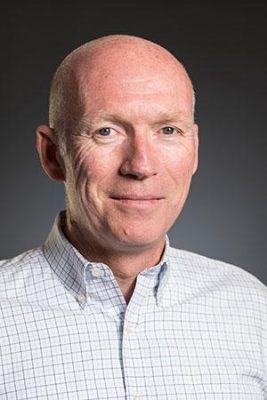
TOPIC: Performance-Based Design in Geotechnical Engineering Practice (2018 Nabor Carrillo Lecture)
The use of performance-based concepts for seismic design has increased greatly over the past 20 years. The performance-based approach is based on the idea that structures and facilities can now be designed and constructed in such a manner that their performance under anticipated seismic loading can be predicted with acceptable accuracy. The large uncertainties involved in characterizing anticipated ground motions, along with those associated with the prediction of system response, physical damage, and losses have led most approaches to performance-based geotechnical design to be formulated in probabilistic terms, although the probabilistic approach is not absolutely required, and not consistently used in current practice, at least in the United States.
Performance-based design of structures and facilities can be accomplished in many different ways. In this paper, the term “structures” will be used in a generic sense to describe systems that could include buildings and bridges, but also earth structures such as embankments, levees, earth dams, natural slopes, foundations, etc. The paper will review probabilistic geotechnical response prediction methods, explore alternative approaches to performance-based design, discuss their implementation in practice, and show how their benefits can be realized in a framework that most practitioners are already familiar with.
CyGS Virtual Presentation (March 29) – Kristen Tappenden, Ph.D., P.Eng.
Date: March 29, 2023, 12:00 PM – 1:00 PM Mountain Time (US and Canada)
SPEAKER: Kristen Tappenden is the Geotechnical Asset Management Specialist for Alberta’s Ministry of Transportation and Economic Corridors. In her role she contributes to the department’s Geohazard Risk Management Program, overseeing the field inspection, instrumentation, monitoring, and mitigation of geohazard sites across the province. Kristen also serves as the geotechnical subject matter expert for the department’s Transportation Asset Management Committee, advocating a strategic, risk-based approach for prioritizing capital investments in geotechnical assets, and providing expert input on geotechnical issues for a variety of provincial infrastructure projects. Since completing her M.Sc. in Geotechnical Engineering at the University of Alberta in 2006, Kristen has gained a broad range of experience as a Professional Engineer in the public, private, and academic sectors. Kristen returned to the U of A to complete her Ph.D. in Geotechnical Engineering in 2017, on the subject of risk management and resilience strategies for landslide hazards affecting railway infrastructure.

TOPIC: Geotechnical (earth) assets such as soil and rock slopes, retaining walls, embankments, and subgrades play a crucial role in the functioning of transportation systems. These same assets also pose potential threats to the transportation network as a result of deteriorating conditions, escalating maintenance costs, or catastrophic failures. Alberta Transportation and Economic Corridors is responsible for the monitoring and management of approximately 500 identified geohazard sites along Alberta’s highway network.
In 2020‑21 the Province partnered with Tetra Tech to develop a Geotechnical Asset Management (GAM) framework based upon the National Cooperative Highway Research Program (NCHRP) Report 903: Geotechnical Asset Management for Transportation Agencies, and to apply this framework to a pilot-scale inventory of 25 geotechnical sites. The intent of the GAM framework is to enhance the Province’s ability to effectively monitor the condition and deterioration of the geotechnical asset inventory, forecast future funding requirements to achieve desired levels of service and monetized risk reduction, and facilitate data-driven decision-making that considers the full life cycle costs and benefits of investing in geotechnical assets.
This presentation will describe Alberta’s current Geohazard Risk Management Program, the results of the GAM framework development and pilot-scale implementation, and the future vision for applying asset management principles to geotechnical sites throughout Alberta.
CyGS March Presentation – James Ryan, M.Eng., P.Eng.
Date: March 1, 2023, 5:30 PM – 7:00 PM Mountain Time (US and Canada)
SPEAKER: Mr. James Ryan is from Prince Edward Island and graduated from the Technical University of Nova Scotia (now Dalhousie) in 1993. From 1994 to 1996, Mr. Ryan worked on the Confederation Bridge Project as a geotechnical engineer and inspector. In 1997, he moved with his wife and young son to Edmonton, AB. From 1997 to 2015, he worked for EBA Engineering (later acquired by Tetra Tech), on a wide variety of geotechnical projects, focussing on infrastructure and urban development, in Edmonton, then Lethbridge, and now Calgary. In 2015, James joined Thurber Engineering and has been focussing on a major LRT project including a tunnel and numerous bridges, and on renewable energy projects, particularly wind power.
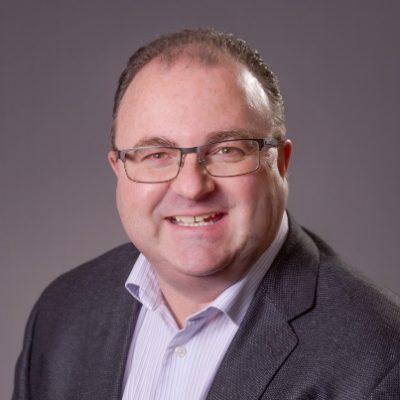
TOPIC: The Confederation Bridge is a 12.9 km long bridge connecting Prince Edward Island to New Brunswick, the longest marine bridge over ice-covered waters in the world. Mr. Ryan was a geotechnical inspector during the construction of the bridge from 1994 to 1996. This presentation is a general overview of the means and methods used to construct the bridge, focussing on geotechnical aspects, including drilling, dredging, piling, foundation preparation of the sea floor, tremie concrete, and massive marine crane placement of large-sized pre-cast bridge components in a marine environment. The presentation will include rare photographs of the construction progress and anecdotal stories and perspectives.
CyGS January Presentation – Vicki Nguyen, P.Eng.
Date: Wed, 25 January 2023, 5:30 PM – 7:00 PM MST
SPEAKER: Vicki has twelve years of experience working as a geotechnical engineer (P.Eng.) in Alberta and British Columbia, after graduating from the University of Waterloo with a BASc in Civil Engineering. Over the last eight years, she has developed numerical models in FLAC 2D and 3D to assess and design slope stabilization measures, perform seismic deformation models, and calibrate model parameters based on field and instrumentation data for tailings facilities, dam structures, and slope stabilization projects.
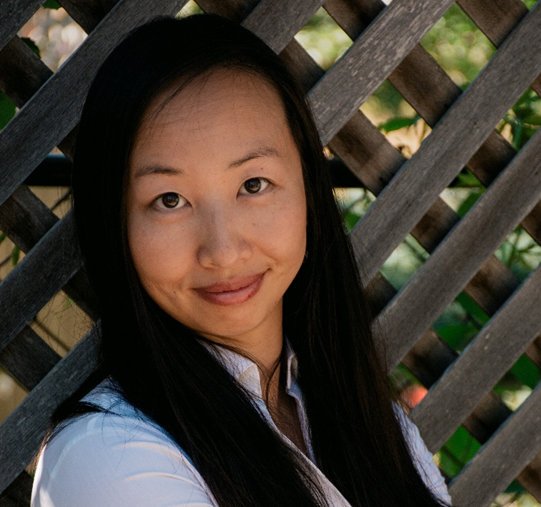
TOPIC: Deformation Analysis of the Coteau Embankment at Gardiner Dam
With support from the Saskatchewan Water Security Agency, KCB has been assessing the potential deformation mechanisms associated with the historical displacements measured within the foundation below Gardiner Dam. To investigate the observed response, KCB has developed a 3D deformation model using FLAC3D to simulate the ground conditions and dam geometry to simulate the dam construction in stages. By comparing the model displacements to the measured data, the material parameters can be calibrated and then the model can be used to predict the future response of the foundation below the embankment structures. This presentation summarizes the basis, methodology, and results of the calibration model for the Coteau Embankment at Gardiner Dam.
CyGS 2021 Award Winner – Brian T. Rogers
Date: Wed, 7 December 2022, 5:30 PM – 7:00 PM MST
SPEAKER: Brian T. Rogers, M.Sc., P.Eng., FEIC
Brian trained at the Imperial College of Science and Technology, London, UK with a B.Sc. in Civil Engineering (1975) and an M.Sc./DIC in Soil Mechanics (1977). After five years with Sir M. MacDonald & Partners, Cambridge, UK, working on dams (Indonesia and Cyprus), and irrigation projects (Somalia and Iraq), Brian moved to Canada in 1980. Over the last 40 plus years, he has worked on the design and construction of water retaining dams, irrigation projects, transportation and infrastructure projects, tailings dams, mine waste rock disposal schemes, and Arctic offshore hydrocarbon developments.
His Arctic offshore experience started when working at Gulf Canada Resources Ltd and includes engineering design and field support for projects in the Canadian Beaufort Sea, offshore Newfoundland on the Hibernia project, and offshore Russia. After joining KCB in 1991, he continued to work on Arctic projects and has also worked on water dam, hydroelectric development, and mine tailings projects in Alberta, Saskatchewan, Ontario, British Columbia, and the Yukon. He is currently a Registered Professional Engineer in Alberta, British Columbia, Saskatchewan, and the Northwest Territories.
Brian managed the Alberta Group of KCB, based in Calgary, from 2000 to 2017. He was elected to the company Board in 2011 and was Chairman of the Board from 2018 to 2022.
Brian has a particularly strong interest in Western Canada and Northern projects and is an advocate of working with northern aboriginal groups through the Inuvialuit Development Corporate and KCB joint venture IEG Consultants Ltd.
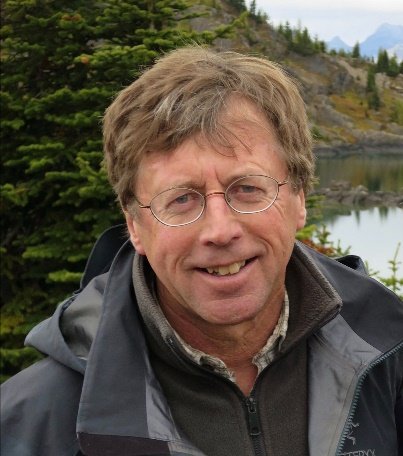
This presentation to the Calgary Geotechnical Society will cover highlights from working on water infrastructure projects and then focus on Arctic projects and contributions made to advance geotechnical engineering during the 1982 to 2012 period. These Arctic projects include engineering design, site investigations, and field support for the Molikpaq drilling platform deployments for offshore hydrocarbon exploration and plans for production developments in the Canadian Beaufort Sea and offshore Sakhalin, Russia.
The talk will explore the variety of challenges faced by our clients as they complete projects in differing economic times, and in diverse environments. Innovation, changes in technology, and the use of case history data will benefit future project planning and execution.
2022 Cross Canada Lecture Tour – Fall Edition
DATE: Nov. 24, 2022, 5:30 PM Mountain Time (US and Canada)
SPEAKER(S): Catherine N. Mulligan, Ph.D.
Dr. Catherine N. Mulligan obtained her B.Eng. and M. Eng. in chemical engineering and PhD in geoenvironmental engineering from McGill University. She worked for the Biotechnology Research Institute of the National Research Council of Canada and SNC Research Corp. of SNC Lavalin before joining Concordia University in 1999. She held a Concordia Research Chair in Geoenvironmental Sustainability (Tier I) and is a full professor in the Dept. of Bldg., Civil and Environmental Engineering. She has authored more than 130 refereed papers in various journals, co-authored or edited 8 books, holds 3 patents and has supervised to completion more than 70 graduate students. She is the founder and director of the Concordia Institute of Water, Energy and Sustainable Systems. The Institute trains students in sustainable development practices and performs research in new systems, technologies and solutions for sustainability. Her research is on the treatment of contaminated soils, water, sediment, and mining residues with biosurfactants and other treatment techniques, in addition to energy production via anaerobic treatment and pressure-reduced osmosis. She is a Fellow of the Canadian Society for Civil Engineering (CSCE) and its current Past President and currently the chair of the Sustainable Geotechnics Committee for the CGS. She is also a Fellow of the Engineering Institute of Canada (EIC), the Canadian Academy of Engineering (CAE), and Royal Society of Canada and was a winner of the John B. Sterling Medal of the EIC.
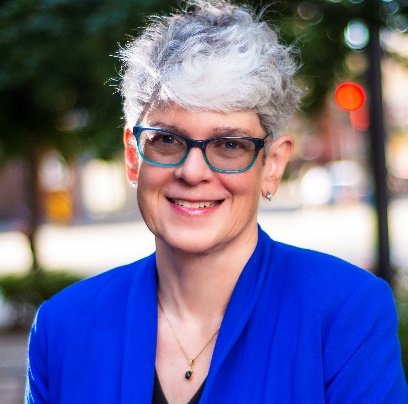
TOPIC: “Sustainable practices for geotechnical engineering”
Due to depletion of natural resources, increased natural disasters, waste, greenhouse gas emissions, pollutant generation, and environmental deterioration, and loss of biodiversity, geotechnical engineers are facing new challenges. While it is generally believed that the concepts of sustainable development must be followed for protecting future generations, it is much easier said than implemented. Therefore, the focus of this talk will be to focus on the application of the principles of sustainable geoengineering to projects and processes. Some tools and frameworks for evaluating and implementing sustainable practices will be presented. The use of environmental, social and economic indicators for measuring and comparing design options will be demonstrated. Best practices in carrying out Indigenous engagement and consultation will be highlighted. Finally, case studies and examples of sustainable practices in design in addition to the challenges and needs for the future will be included. The role of geotechnical engineers in sustainable development has been undervalued but is critical for future generations.
2021-2022
2022 Cross Canada Lecture Tour – Spring Edition
DATE: June 22, 2022 5:30 PM Mountain Time (US and Canada)
SPEAKER(S): Dr. Doug Stead, Ph. D.
Doug Stead began his career in geotechnical engineering in 1978 working on rock and soil slope stability at Nchanga Open Pit in the Zambian Copperbelt, Africa. This was immediately followed by periods working in engineering geology and rock mechanics consulting in the UK and Hong Kong. In 1984, after obtaining his PhD at the University of Nottingham, UK, investigating rock slope stability in UK surface coal mining, he was appointed Lecturer in Applied Geology at the University of Papua New Guinea and then in 1986 Assistant Professor in Geological Engineering at the University of Saskatchewan, Canada. From 1996-2000 he was Chair in Geotechnical Engineering at Camborne School of Mines, University of Exeter, UK. In 2000, he returned to Canada where he was Chair in Resource Geotechnics at Simon Fraser University, B.C. until June 30th 2021. His research has focussed on experimental rock mechanics (brittle fracture and acoustic emission), open pit and underground geomechanics and rock slope engineering. In particular he has emphasised the applications of numerical modelling, remote sensing, and more recently mixed-virtual reality visualisation in rock engineering.
Doug has received several awards from the Canadian Geotechnical Society, CGS, for his contributions to geotechnical engineering, including the societies most prestigious award the RH Legget Medal (2017), the John Franklin Award for contributions to Canadian rock mechanics (2009) and the Thomas Roy Award for engineering geology, (2008). He was also awarded the Engineering Institute of Canada, John B. Stirling Medal (2019) for his leadership and services in geotechnical engineering.
Dr. Stead has authored over 300 technical papers on engineering geology and rock engineering. He has delivered numerous keynotes and invited lectures, including the 34th Online ISRM Lecture in June 2021 and the 1st CGS Online lecture in Spring 2022. He was co-author with Dr. Loren Lorig of the chapter on numerical modelling in the textbook “Rock Slope Engineering, 2017 5th edition” by Dr Duncan Wyllie and was co-editor, with Dr. John Clague, of the book “Landslides: Types, mechanisms and modelling”
Dr. Stead served as both ISRM Vice-President for North America and Chair of the ISRM Technical Commissions Oversight Committee (2015-19), He is Past Vice-President Technical for the Canadian Geotechnical Society and Past President of the Canadian Geoscience Council. Dr. Stead is currently a Fellow of the International Society of Rock Mechanics, a Fellow of the Engineering Institute of Canada, a Professional Engineer (PEGBC), an Honorary Visiting Professor at the University of Exeter, UK and an Honorary Professor at the University of British Columbia, Canada. Dr. Stead has undertaken extensive research/consultancy on a wide range of rock engineering projects in Europe, North America, Africa, Asia, and Australia.
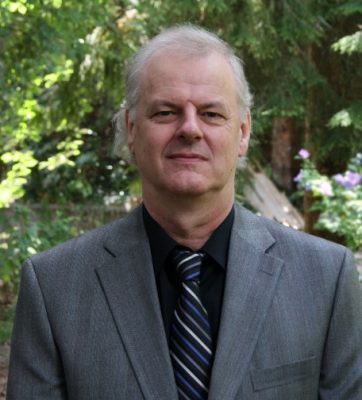
TOPIC: “Characterizing rock slope failure mechanisms using combined remote sensing and numerical modelling”
Slope failure mechanisms vary in complexity from simple translational slides to complex multi-block/multi-slip mechanisms. Developments in remote sensing and slope analysis techniques have seen a rapid transition from air photograph interpretation and simple limit equilibrium analyses to increasingly sophisticated and readily available ground and airborne/satellite sensing methods and 2D/3D numerical models. A focus of this talk will be on improving our understanding of complex rock slope failure mechanism through remote sensing characterization and monitoring constrained against numerical models. Using case studies of natural and engineered slopes from North America, Europe and Africa the importance of structural geology, kinematics and slope damage will be demonstrated. With the continued advent of innovative technology the need to fully optimize available data is emphasized, along with the need to ensure that the limitations of these techniques are considered and that the key role of conventional engineering geological and engineering geomorphological investigations recognized.
2022 Annual General Meeting
DATE: May 11, 2022 5:30 PM Mountain Time (US and Canada)
SPEAKER(S): Gord McKenna, Ph. D., P. Eng., P. Geol.
Gord McKenna is a geotechnical engineer and geologist who builds mining landforms. He brings 34 years of experience in mine operations and international consulting for metal, oil sands, coal, potash, and diamond mines.
McKenna Geotechnical provides independent geotechnical review, design, and advice to mines, regulators, and communities. Gord sits on ten geotechnical review boards, is an adjunct professor at the University of Alberta, and chairs the Landform Design Institute.
Gord is a builder. He and his teams have designed and built 26 reclaimed watersheds that cover 54 square kilometers and host 38 wetlands and 119 kilometers of streams. He has co-authored 100 technical papers and book chapters and led 40 landform design courses.
Gord’s specialties include mining geotechnique, tailings dams, soft tailings capping, and landform design. He has a BASc in Geological Engineering from the University of British Columbia and a Ph.D. in Geotechnical Engineering from the University of Alberta.
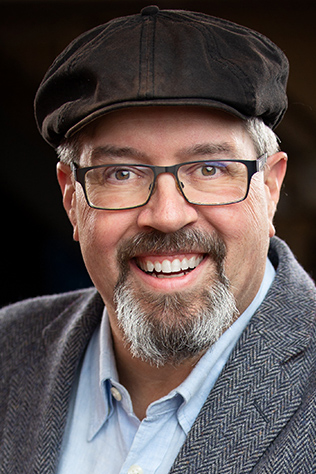
TOPIC: “Safe Closure for Tailings Facilities”
The 2020 Global Industry Standard on Tailings Management identifies the need to design, construct, operate, and reclaim tailings facilities to achieve “safe closure” which is defined as “a closed tailings facility that does not pose ongoing material risks to people or the environment.” We all want safe closure, but just what does safe closure of a tailings landform mean in practice? What does it mean to an operator, to a design engineer, to a regulator, to an insurance company, and to someone living at the toe of a tailings slope? How will we all agree on whether it is “safe”?
The industry will be working in the coming years to define safe closure and identify good practices for new and existing tailings facilities. This talk explores the issues, discusses the notion of acceptable residual risks, and describes the use of the landform design process to establish a clear design basis (acceptable to all), a process for designing, constructing, and monitoring the facility against the design objectives, and the use of an operation, surveillance, and monitoring program, in collaboration with local communities, to manage the long-term residual risks. Opportunities and pitfalls of particular interest to design professionals will be highlighted and discussed.
DATE: Apr 20, 2022 12:00 PM Mountain Time (US and Canada)
SPEAKER(S): Dave Bigelow, M. Sc., P. Eng.
Dave Bigelow is a Climate Risk Engineer, with the Climate Risk, Resilience and Sustainability Team at Stantec. His technical experience is in applied climate science, hydrology, and natural hazards risk assessment. He has conducted a wide variety of physical climate risk assessments from regional to site scales across Canada for clients in government, energy, transportation, and environmental services.
TOPIC: “Climate Risk Assessment”
Climate change is having immediate and direct impacts on our communities, environment, and infrastructure. It is well understood that climate change impacts should be considered in design to increase resilience, but it is not always obvious where to prioritize our efforts. These efforts are further hampered by questions of which datasets to use and how to use them. Climate risk assessments provide screening-level analyses of relevant hazards and assets to identify where to focus resilience efforts. This talk will provide a concise overview of applied climate science, showing how results from climate model projections can be used in engineering applications. It will cover the basics of how climate models work, how to handle uncertainty, where to find data, and how to use that data in a risk assessment framework.
DATE: Mar 9, 2022 12:00 PM Mountain Time (US and Canada)
SPEAKER(S):
Carie-Ann Lau, M.Sc., P.Geo.
Matt Lato, Ph. D., P. Eng.
Carie-Ann Lau has more than nine years of experience in airphoto and lidar interpretation, debris flow and debris flood geohazard assessment, terrain analysis, glaciated soil engineering geology, and site characterization in Western Canada. Her focus is on floods and landslides and the risk they pose to municipalities, pipelines, and transportation clients.
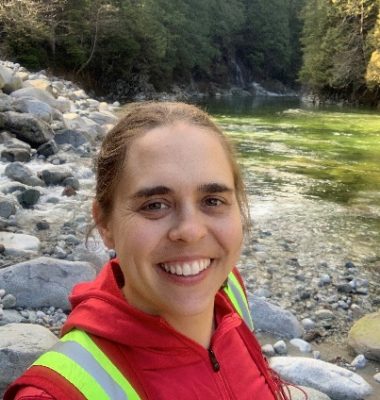
Matt Lato is a Senior Engineer and the Innovation Lead at BGC Engineering. His technical expertise is in the application of 3-dimensional remote sensing in geotechnical engineering. Matt is the lead author of the Site Investigation, Analysis, Monitoring and Treatment chapter of the Canadian Technical Guidelines and Best Practices related to landslides, and an author or co-author of over 150 journal and conference papers. He is an Adjunct Professor in the Department of Geological Sciences and Geological Engineering at Queen’s University, and an Affiliate Faculty Member in the Department of Geology and Geological Engineering at the Colorado School of Mines.
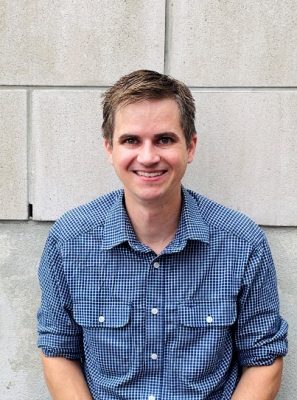
TOPIC:
“Disaster Response: A Coordinated Response to the November 2021 Atmospheric Rivers on Infrastructure in British Columbia”
From mid to late November 2021, southwestern British Columbia and northwestern Washington were affected by a series of atmospheric rivers that caused widespread geohazards and destruction of critical infrastructure. Highways, pipelines, energy transmission lines, and railways all experienced damage and were inoperable – many still are. Communities were flooded, homes were lost, and livestock terminated.
In the immediate aftermath of the event, BGC worked collaboratively with numerous clients spanning multiple sectors to develop an understanding of the damage and help chart a path to recovery. Our response effort involved field-based staff to collect observations and photographs while working in tandem with office-based staff to process and analyze instrumentation, remote sensing, and historical datasets to understand, quantify, and design remediations.
We will describe the intensity and duration of the atmospheric rivers including rainfall and snowmelt and their relationship to observed flood magnitudes and how advancements in photogrammetric and airborne lidar change detection processing and digital delivery of the results have supported the immediate response and are helping asset owners begin operations.
DATE:
Feb 9, 2022 12:00 PM Mountain Time (US and Canada)
SPEAKER:
Doug Dewar, M.Sc., P.Eng. (BC, AB, SK)
Doug Dewar is a middle-aged practicing engineer who manages Pembina Pipelines’s geohazard management program. He received a Bachelor’s degree in Geological Engineering from the University of New Brunswick prior to being deported from the Maritimes to complete a Master’s degree in Geotechnical Engineering at the University of Alberta under Dr. David Cruden.
Doug has spent over 25 years working for consultants and the pipeline industry as a landslide mechanics/geohazard management specialist. Interests include leveraging inline inspection inertial measurement (IMU) and axial strain technologies to improve the geohazard management. Conference paper and joint industry practice publications include IMU feature, AXIAL strain feature and soil/pipeline interactions classification systems. His only real claim to fame is developing the first real time watercourse depth of cover tracking system in 2013. He volunteers as the chair for the International Pipeline Conference Geohazards track and torments perspective authors as a technical reviewer.
Doug is married with two teenage boys and has 3 standard Dachshunds – Sir Lincolnshire, Heinz and Genoa. To the best of his knowledge, Doug has never been hired for his looks.
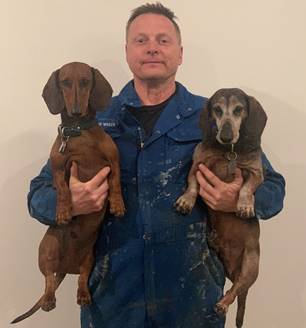
TOPIC:
“The Ground Contouring Metal Slope Inclinometer, A.K.A. a Pipeline. The Integration of Pipeline Data in Landslide Geohazard Management”
Soil compaction is a common practice in engineering projects to improve soil strength and stiffness. However, compacted soil is usually unsaturated and subjected to matric suction, which also contributes to part of soil strength. Relation between preconsolidation pressure and undrained shear strength for normally consolidated and overconsolidated saturated soils has been mathematically expressed based on the critical state soil mechanics. For unsaturated soil, the relation between these two parameters is more complicated because of matric suction. In this study, a series of constant-rate-of-strain consolidation tests were conducted on compacted silty sand to determine the preconsolidation pressure at various soil water contents, while confined undrained triaxial compression tests were performed to derive the undrained shear strength. A special emphasis was placed on the relation between preconsolidation pressure and undrained shear strength of the tested silty sand in unsaturated condition.
Click Here for Doug’s Zoom Lecture
Click Here for Doug’s Presentation Slides
DATE: Dec 15, 2021 12:00 PM Mountain Time (US and Canada)
SPEAKER: Dr. Yadong Zhang, Ph.D.
Dr. Yadong Zhang is currently working as a postdoctoral associate at the University of Calgary, from where he has recently obtained his Ph.D. in Geotechnical Engineering under the supervision of Dr. Ron Wong. His research interests are unsaturated soil mechanics and soil-pipe interaction problems by applying both experimental and numerical tools. In particular, he has designed and performed full-scale tests on large diameter buried pipes to investigate the impact of soil compaction and external load on pipe deformations.
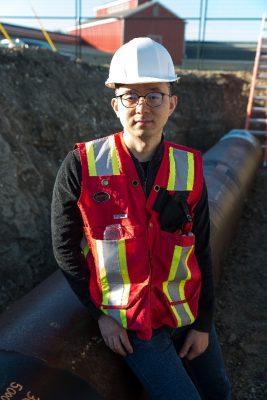
TOPIC: “Preconsolidation pressure and undrained shear strength of compacted silty sand”
Soil compaction is a common practice in engineering projects to improve soil strength and stiffness. However, compacted soil is usually unsaturated and subjected to matric suction, which also contributes to part of soil strength. Relation between preconsolidation pressure and undrained shear strength for normally consolidated and overconsolidated saturated soils has been mathematically expressed based on the critical state soil mechanics. For unsaturated soil, the relation between these two parameters is more complicated because of matric suction. In this study, a series of constant-rate-of-strain consolidation tests were conducted on compacted silty sand to determine the preconsolidation pressure at various soil water contents, while confined undrained triaxial compression tests were performed to derive the undrained shear strength. A special emphasis was placed on the relation between preconsolidation pressure and undrained shear strength of the tested silty sand in unsaturated condition.
DATE: Nov 24, 2021 10:00 AM Mountain Time (US and Canada)
SPEAKER: Dr. Marcos Arroyo
Marcos Arroyo is a Civil Engineer specialized in geotechnics. He obtained a PhD from Bristol University (UK), with a thesis on the interpretation of laboratory seismic tests. In 2005 he joined the Department of Geotechnical Engineering and Geosciences at UPC, where he is now Associate Professor and is currently responsible for courses on “Geotechnical design”, “Offshore foundations” and “Marine geodynamics”. He has initiated a variety of research projects there that have attracted more than 4 M€ of public and private funding. His research is problem-driven and relies on different numerical (DEM, FEM, PFEM) and experimental (laboratory & in situ testing) techniques to address questions of geotechnical interest. The outcomes of this research are regularly published in peer-reviewed scientific conferences and journals (see https://www.researchgate.net/profile/Marcos-Arroyo-2). Marcos Arroyo worked for 8 years in geotechnical design offices and acts regularly as consultant in a variety of engineering projects, related to foundations, ground improvement, mineral residues, etc. He is active in several normative committees, notably ISO-TC182 Geotechnical testing and CENTC250- Eurocodes, where he has been part of the drafting teams for the renewed Eurocodes EC7.1 Geotechnical design. General rules and EC7.2. Geotechnical design. Ground properties.
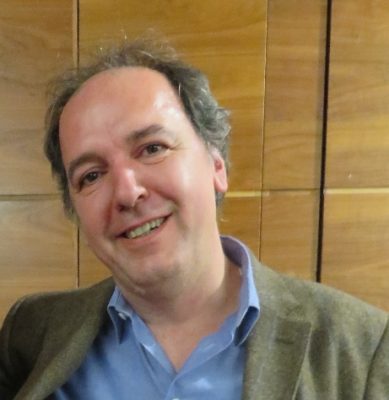
TOPIC: “Numerical analysis of the Brumadinho tailings dam failure”
In November 2019 a team led by Marcos Arroyo was designated by the Public Prosecutor Office of Brazil (MPF) to perform numerical modelling of the Brumadinho tailings dam so as to clarify the proximate causes of that abrupt failure. The resulting report, which was made public by the MPF in October 2021 (https://tinyurl.com/cs3tdxd9), will form the basis of the presentation.

DATE:
Nov 17, 2021 12:00 PM Mountain Time (US and Canada)
SPEAKER:
Mike Jefferies, P.Eng.
Mike Jefferies, P.Eng. is a registered Canadian professional engineer with a broad background of some 45 years in offshore platforms, dams, and ground improvement. Strongly influenced in his early years by Professors Bob Gibson, Alan Bishop, and Peter Wroth, Mike has pursued an interest in theoretical soil mechanics despite working as a consulting engineer and derived the general form of critical state theory. A keynote speaker/author at international conferences on liquefaction, hydraulic fill construction, engineering mechanics, and the Arctic offshore, Mike has published some eighty papers (which have attracted more than 7000 citations) and is co-author of the influential book Soil Liquefaction: A Critical State Approach. Mike was an invited contributor to Geotechnique, the Canadian Geotechnical Society’s Fall/2012 Cross-Canada Lecturer, presented the 2014 Šuklje Lecture, and gave the 2017 Jennings Lectures; he was awarded a Telford Premium for geotechnical research in 2017.
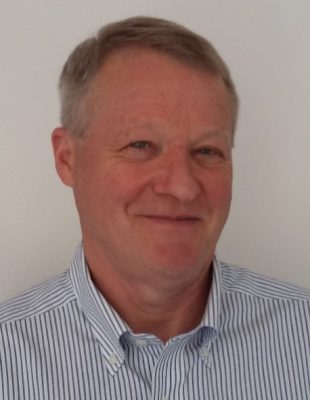
TOPIC:
“Analysis of Static Liquefaction with Plaxis: 1974 Tar Island Slump”
Finite element analyses using critical state theory proved necessary to understand the development of static liquefaction during three recent large tailings dam failures at Fundao, Cadia and Brumadinho. However, the complexity of these events prevents these analyses being viewed as a complete validation of the methodology. Here we evaluate a far simpler case of static liquefaction: the 1974 Tar Island slump, which involved a rapid drop of 5m during construction of a 12.5m high upstream raise over loose tailings. While not a dam stability issue, the event has the attraction of being load-induced, with simple geometry, and with known material properties and insitu state. The analyses were carried out with commercial software (PLAXIS) and use critical state theory with largely familiar soil properties measured by standard methods. The computed liquefaction develops from a prior drained condition, with essentially no precursors, before propagating rapidly undrained – there are similarities to the video record at Brumadinho and an animation will be shown to illustrate this. As a related historical note, the theory and methodology were originally developed in Calgary 1982-9 by Gulf Canada Resources albeit strongly based on work by the US Corps of Engineers.
DATE:
Sep 9, 2021 04:00 PM Mountain Time (US and Canada)
SPEAKER:
Dennis Becker, Ph.D., FEIC, FCAE, P.Eng.
Dennis E. Becker, Ph.D., FEIC, FCAE, P.Eng. is a Principal and Senior Geotechnical Engineer with Golder, a Member of WSP, with over 40 years of national and international experience on numerous large scale civil engineering and resource development projects. Dennis is active in many key engineering and professional societies and maintains close liaisons with universities. He served for more than 20 years on technical committees of the Canadian Standards Association (CSA), National Building Code of Canada, Canadian Highway Bridge Design Code, and CSA Offshore Code (Foundations), extensively involved with the development and implementation of limit states design (LRFD) for foundations, and was Co-Editor of the 4th Edition of the Canadian Foundation Engineering Manual. He was also involved in the ASCE Geo-Institute’s initiative to produce Guidance Document on Risk-Informed Decisions in Geotechnical Engineering. Dennis has received senior awards from the Canadian Geotechnical Society, Engineering Institute of Canada, and Canadian Society of Civil Engineers, and is a Fellow of the Canadian Academy of Engineering and Engineering Institute of Canada. Dennis was President of the Canadian Geotechnical Society, Vice-President (North America) of the International Society for Soil Mechanics and Geotechnical Engineering (ISSMGE), and Editor of the Canadian Geotechnical Journal.
TOPIC:
“Testing in Geotechnical Design”
Testing is an inherent and integral element of geotechnical design. The presentation describes and discusses geotechnical testing in the design process from a consulting practitioner’s perspective of the current state-of-practice. The role, objectives, types and interpretation of testing, limitations and recommended good practices are presented. Successful implementation of testing in design is demonstrated through examination of test data from a few case records.
2020-2021
DATE:
Jun 16, 2021 04:00 PM Mountain Time (US and Canada)
SPEAKER:
Dr. Chris Bunce, P. Eng
TOPIC:
Pipe-soil Interaction research from an integrated industry and academia perspective.
Dr. Bunce will discuss some of the geotechnical challenges faced by railways and the approaches most often taken to respond to and manage these risks by revisiting some of the incidents and projects he has been involved in for the last 25 years.
The executive committee of the Calgary Geotechnical Society (CyGS) is pleased to hold this years AGM virtually, to be followed by a presentation by Dr. Chris Bunce, P. Eng. titled “Geotechnical Challenges faced by Railways”. In efforts to maintain social distancing as well as opportunity to engage more participants, the presentation will be held virtually using the Zoom video conferencing application. Please see below for more details.
DATE:
Jun 16, 2021 03:30 PM Mountain Time (US and Canada)
Register in Advance for this meeting:
https://us02web.zoom.us/meeting/register/tZ0rdO6spzosHdP5tySo5w6e3jLJlmrTslx3
After registering, you will receive a confirmation email containing information about joining the meeting.
SPEAKER:
Dr. Chris Bunce, P. Eng
Dr. Chris Bunce, P.Eng. is a professional geotechnical/geological engineer and manager with 30+ years experience specializing in natural hazard assessment and mitigation, emergency response and all aspects of constructing transportation infrastructure. He has managed and supervised teams of engineers, environmental scientists, technologists, hazardous materials specialists, geotechnical experts, consultants, contractors, and mining personnel; completing multi-million-dollar design, environmental remediation, construction earthworks, mining and railway projects across North America. He completed both his Ph.D. and M.Sc. in landslide prediction and risk assessment. He has a passion for natural hazard management, and developing and implementing superior geotechnical engineering solutions. He is a strong leader with a desire to improve the geotechnical engineering field through education and research. Dr. Bunce has been involved in projects including landslide stabilization natural hazard management, rail spur, siding and sub-grade construction and repair, site investigation rock slope design, stabilization and installation and testing of rock reinforcement, rock fall protection, debris flow assessment and protection, pipeline routing, directional drill crossings mining pit wall and rock waste-dump assessments and slope stability, groundwater dewatering, geotechnical mapping dam construction, foundation grouting, and emergency response to natural and environmental incidents. Some of the major clients and projects he has worked on include the Canadian Pacific (CP) and Canadian National (CN) and other railways across North America, Teck Resources in their northeast and southeast BC coal mines, the Oldman River Dam in Southwest Alberta, numerous pipeline projects in BC and AB, the investigation and remediation of underground coal mining and slope stabilization investigations and mitigation projects.
TOPIC:
“Geotechnical Challenges faced by Railways”
Dr. Bunce will discuss some of the geotechnical challenges faced by railways and the approaches most often taken to respond to and manage these risks by revisiting some of the incidents and projects he has been involved in for the last 25 years.
DATE:
May 25, 2021 04:00 PM Mountain Time (US and Canada)
SPEAKER:
Dr. Kshama Roy
TOPIC:
Pipe-soil Interaction research from an integrated industry and academia perspective.
About 74 times every year (About 16 in North America), pipeline failure occurs due to geohazards around the world, and therefore, understanding the mechanism of pipe-soil interaction is of utmost importance. However, due to the complex nature of pipe-soil interaction as it requires an understanding of both structural/mechanical and geotechnical engineering, there are several areas in both pipeline design and integrity assessment where further research is needed from the geotechnical perspective. This talk has been designed to address some of these potential research areas inspired by the current industry practice.
DATE:
Apr 21, 2021 04:00 PM Mountain Time (US and Canada)
SPEAKER:
Mr. Martin Lun, M.Sc., P.Eng. and Mr. Charles Kwok, M.Sc., P.Eng.
TOPIC:
194th Ave Overpass Project
To accommodate the continuing growth in the West Macleod area in South Calgary, a new roadway consisting of an approximately 10 m high embankment, known as 194th Avenue S.E. Priddis Slough Crossing, was constructed over an environmentally sensitive low-lying area within a large body of water. The subsurface conditions consist of soft and organic pond deposits over a highly variable sand and gravel layer, over clay deposits ranging from 10 m to 20 m in thickness, underlain by sedimentary bedrock. Area-wide preloading was required to construct the roadway which included constructing a single-span wildlife underpass bridge founded on steel piles. The effects imposed by the on-going settlement was a consideration in the design of the bridge crossing and associated retaining structures. Further, in order to meet the target schedule for road opening, construction of the roadway required installation of area-wide wick drains and preloading technique to accelerate consolidation settlement.
This presentation describes the geotechnical programs completed prior to and during construction, compares the estimated and measured embankment settlements, and discusses constructability issues during installation of gravel shear keys and wick drains through the surficial sand and gravel layer.
DATE:
March 18, 2021 04:00 PM Mountain Time (US and Canada)
SPEAKER:
Mr. Ajay Sharma, and Mr. Dan Ferg
Ajay Sharma, P. Eng
Ajay is a Professional Civil Engineer with over 17 years of experience in project management, site supervision, engineering design, and construction management within the heavy civil construction, mining and oil and gas sectors throughout Canada, Australia and the United Kingdom
Dan Ferg, P.Eng
Dan Ferg is GeoStabilization’s Regional Engineer for Canada. After earning his Civil Engineering Technologist diploma from SAIT in Calgary, Dan worked briefly as a CAD designer and field supervisor for a local civil engineering firm. He then attended the University of British Columbia where he earned his Civil Engineering degree. Dan spent the next eight (8) years as a Geotechnical Engineer with consulting firms in Canada and New Zealand. Dan has worked in remote locations throughout Western Canada and New Zealand; as well as project work in Qatar, Guinea, and Mexico.
TOPIC:
Calf Robe Bridge – Abutment Stabilization
The Calf Robe Bridge is located in Calgary Alberta on the major corridor of Highway 2 also known as Deerfoot Trail. The bridge is located adjacent to the Bonnybrook Wastewater Treatment Plant (BBWWTP) which was being upgraded. A part of the upgrade was to install a discharge conduit downstream of the bridge. The alignment of the conduits was installed through the toe of the bridge abutment. Therefore, a bespoke stabilization solution for the abutment was required.
The bridge abutment and near surface soils consisted of a primarily granular fill, overlying fluvial sand and gravel, overlying sedimentary bedrock. The required excavation was expected to terminate near the bedrock interface, thus an over-steepened excavation was required in non-cohesive soils. Core samples of the bedrock suggested that a shear band is possible within the mudstone that is interlayered with more competent sandstone. The potential shear band was located below the excavation causing concern for deeper seated abutment failure.
The Geotechnical design for slope and abutment stability were led by GSI with critical review points by key stakeholders. A monitoring and controls plan was developed, and the site was monitored by GSI and the owners engineer. Daily surveys and in-situ instrumentation were used to provide confidence to stakeholders that this key piece of infrastructure would remain in service during the conduit installation process.
A design – build solution was chosen to stabilize the abutment to allow for the installation of the conduits. The solution consisted of the installation of 280 hollow bar soil nails with a 150 mm shotcrete facing. To mitigate against the potential shear band the design called for the installation of 118 drilled shafts backfilled with reinforced concrete.
DATE:
February 17, 2021 04:00 PM Mountain Time (US and Canada)
Speaker:
Dr Ron Wong, University of Calgary
Dr. Ron Wong holds his degrees from McMaster University and University of Alberta. Prior to joining University of Calgary, he gained more than 10 years of experience in geotechnical and structural engineering in consulting and energy sectors. His current research interests focus on fatigue behavior of geomaterials under environmental loading.
Topic:
Soil-Pipe Interaction in Moving Slopes: Some Missing Gaps
Physical model tests were conducted to replicate soil-pipe interaction in moving slopes under axial, vertical uplift and lateral loading. Varying displacement rates were used in the prototype tests. Failure modes observed in the tests are distinctly different from those assumed in the existing ASCE/ALA/PRCI Guidelines, which may result in inconsistency in estimation of soil resistance. Furthermore, the test results illustrate that the soil-pipe system exhibits a time- or rate-dependent behavior, i.e., “isotach” behavior. The soil resistance increases with increasing pipe displacement rate, or vice versa. Practical implications of (i) failure mode and (ii) time-dependent behavior on the performance of buried pipelines subjected to long-term ground movement are addressed.
Calgary Geotechnical Society Online Presentation
DATE:
Jan 20, 2021 04:00 PM Mountain Time (US and Canada)
SPEAKER:
Mr. Scott McKean.
TOPIC:
Rock Mass Characterization & Data Science in Petroleum Geomechanics
Scale, uncertainty, and cost noticeably intersect in petroleum geomechanics. This talk provides a general overview of applied petroleum geomechanics for geotechnical engineers, based on Mr. McKean’s experience at the University of Calgary through graduate studies,at CNOOC studying thermal and unconventional assets, and at Chevron as a subsurface data scientist. The talk focuses on the intersection of data science and subsurface characterization. First, the importance of the rock mass and discrete fracture networksis presented along with some of the strategies used to characterize them and make decisions. Second, uncertainty and cost in geomechanical characterization is discussed with a focus on how we can embrace the paucity of experimental data and uncertainty atscale, as well as integrate disparate data sources. Finally, the talk provides some speculative thoughts on how data science and subsurface characterization might intersect in the near future.
DATE:
Dec 9th, 2020 04:00 PM Mountain Time (US and Canada)
SPEAKER:
Dr. Richard Guthrie, MSc, PhD, MASME, P. Geo.
Dr Richard Guthrie is an internationally recognized geoscientist with expertise in geohazards and risk assessment. His research is published in leading scientific journals including Nature Geoscience, Geomorphology, Natural Hazards and Earth Systems Science,Landslides, Earth Surface Processes and Landforms, and the Quarterly Journal of Engineering Geology and Hydrogeology (among others). He is the recipient of multiple awards including Best Paper in EGBC’s Innovation (2018), Best Paper at IPC (2018), and theConsulting Engineers of Alberta Showcase Award (2019) for software (LABS: an agent-based landslide simulation model). As the director for the Geohazards and Geomorphology at Stantec, Dr. Guthrie leads an expert team of specialists to solve slope, river anderosion problems related to engineering, construction, and the natural environment.
TOPIC:
Spies and Landslides – How an Agent-Based Model Better Predicts Debris Flow Runout
Credible models of landslide runout are a critical component of hazard and risk analysis in the mountainous regions worldwide. Hazard analysis benefits enormously from the number of available landslide runout models that can recreate events and provide keyinsights into the nature of landsliding phenomena. Regional models that are easily employed, however, remain a rarity. For debris flows and debris avalanches, where the impacts may occur some distance from the source, there remains a need for a practical,predictive model that can be applied at the regional scale.
Landslides: Agent-Based Simulation, or LABS, is software that simplifies the complex behavior of debris flows and debris avalanches (collectively referred to as debris flows) to provide reasonable predictions of landslide runout, inundation, and depth alongthe path.
This talk will introduce LABS, explain what an agent-based simulation is and why it works so well, and provide case studies where LABS was successfully deployed. In addition to the slide show, a live video feed will demonstrate LABS in action and discuss someof the pros and cons of deploying such a model.
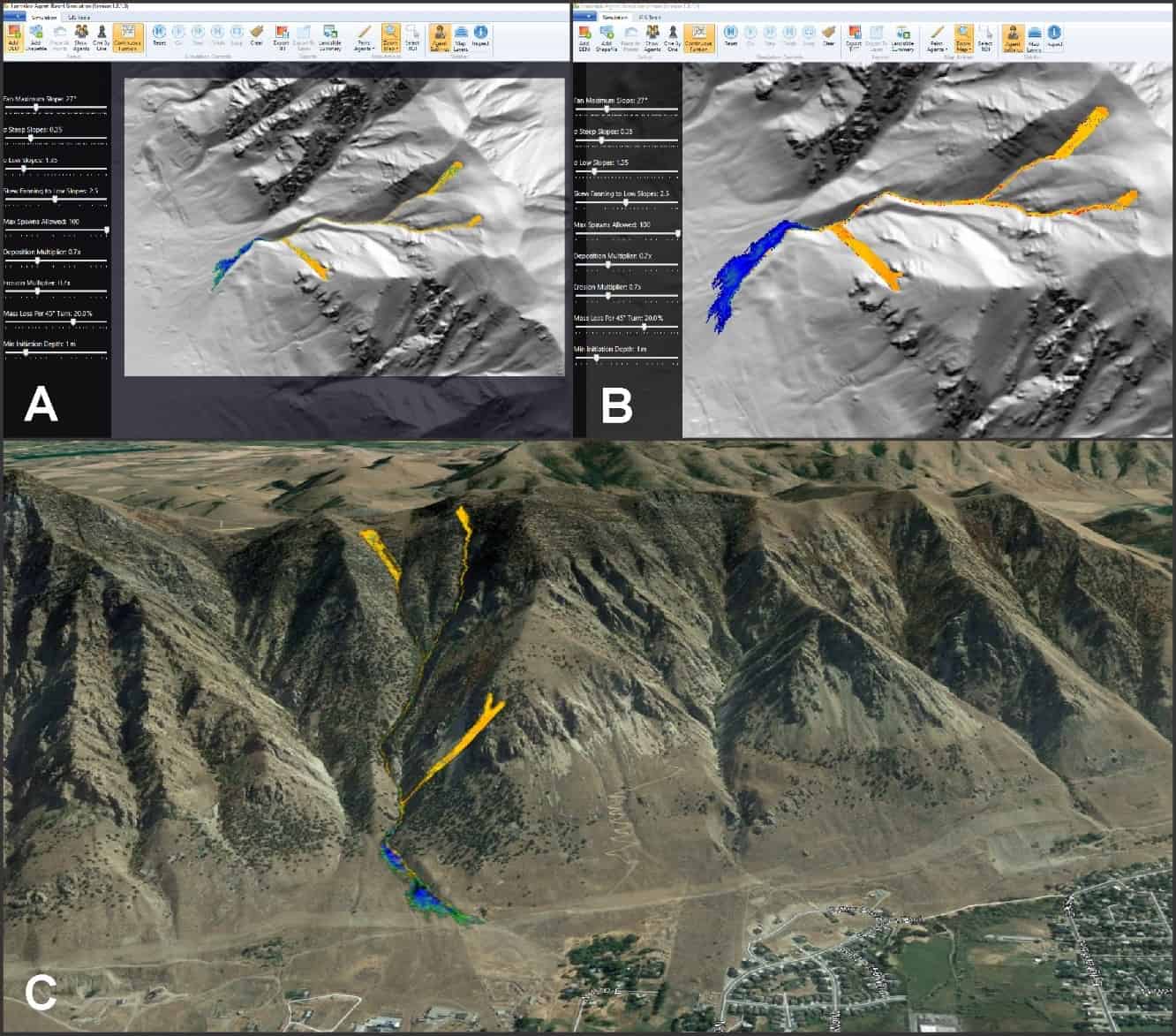
Date
Wednesday November 18, 2020
Event
November 2020 –Regular Series Lecture
Location
Zoom Video Conferencing
Time
4:00 PM Mountain Time
Speakers
Dr. Jim Oswell
Jim Oswell is a geotechnical and permafrost engineer based in Calgary. His work has taken him across northern Canada and into Alaska, Siberia and the Tibetan Plateau of China. He specializes in permafrost engineering and soil-pipeline interaction problems. He has a Ph.D. in geotechnical engineering from the University of Manitoba.
Topic
An Antarctica Geotechnical Investigation
Abstract
In late October 2019, Jim Oswell traveled from Canada to Antarctica as part of a team preparing to develop and construct a new research station for the New Zealand government on Ross Island (77°51′ South).
Jim spent 10 days on site and was able to witness the last sunset (until February 22, 2020), baby seals being born on the ice pack, hike some hills with views of active volcanoes and glaciers, and lots of drill core. This talk will provide photographs of his visit including transport by the US Air Force from Christchurch New Zealand to a runway on the polar ice shelf, the New Zealand Scott Base research station, the United States McMurdo research station, and the ground conditions where the new research station will be constructed. The near surface materials comprise interbedded layers of basalt and scoria with ice crystals and discrete columnar ice layers. He will describe some of the challenges with working in this environment and the challenges of foundation design where the mean monthly air temperature never rises above freezing. The talk will also address several issues related to foundation design in permafrost, namely the effect of raised buildings on ground temperatures and the delusion that larger spread footings may mitigate self-weight thaw settlement.
RSVP
Pre-register at Zoom Online
Date
October 28, 2020
Event
October 2020 – Regular Series Lecture
Location
Zoom Video Conferencing
Time
3:30 – 5:30 pm
Speaker
Mr. Andrew Bayliss
Topic
Impacts of glacially-modified valley land systems on the geotechnical design, construction and performance of dam foundations in Canada.
RSVP
Pre-register at Zoom Online
2019-2020
Welcome to the 2020–2021 lecture series!
The regular lecture series is held at the Austrian Canadian Cultural Centre at 3112 11th Street NE, Calgary. (See map here).
There is parking available either at the ACC or on-street.
The talks are held either in the upstairs hall or downstairs – doors on the west side of the building.
Lectures are free to attend unless stated otherwise.
Date
Thursday March 19, 2020
Event
March – Regular Series Lecture
Location
Austrian Canadian Cultural Centre, 3112 – 11 Street NE, Calgary
Time
5:30 – 6:00 pm: Cash Bar and light snack
6:00 – 7:00 pm: Presentation
Speakers
Dr. Jim Oswell
Jim Oswell is a geotechnical and permafrost engineer based in Calgary. His work has taken him across northern Canada and into Alaska, Siberia and the Tibetan Plateau of China. He specializes in permafrost engineering and soil-pipeline interaction problems. He has a Ph.D. in geotechnical engineering from the University of Manitoba.
Topic An Antarctica Geotechnical Investigation
Abstract
In late October 2019, Jim Oswell traveled from Canada to Antarctica as part of a team preparing to develop and construct a new …
research station for the New Zealand government on Ross Island (77°51′ South). Jim spent 10 days on site and was able to witness the last sunset (until February 22, 2020), baby seals being born on the ice pack, hike some hills with views of active volcanoes and glaciers, and lots of drill core.
This talk will provide photographs of his visit including transport by the US Air Force from Christchurch New Zealand to a runway on the polar ice shelf, the New Zealand Scott Base research station, the United States McMurdo research station, and the ground conditions where the new research station will be constructed. The near surface materials comprise interbedded layers of basalt and scoria with ice crystals and discrete columnar ice layers. He will describe some of the challenges with working in this environment and the challenges of foundation design where the mean monthly air temperature never rises above freezing.
Cost
$20 for regular members; free for full-time students.
Limited
tickets will be available at the door for cash or cheque only.
Pre-registration is required for regular members and students.
RSVP
Pre-register at Eventbrite
Please indicate any dietary restrictions at announce@cgygeosociety.org.
Date
Tuesday February 25, 2020
Event
February – CGS Colloquium Lecture Series
Location
Austrian Canadian Cultural Centre, 3112 – 11 Street NE, Calgary
Time
5:30 – 6:00 pm: Cash Bar and light snack
6:00 – 7:00 pm: Presentation
Speakers
Dr. Kathy Kalenchuk
Dr. Kalenchuk completed her BSc. Mining Engineering at the UofA, and her M.Sc & Ph.D Geomechanical Engineering at Queen’s. She is the President and Principal Consultant of RockEng Inc. Kathy has over 12 years of experience in geotechnical and geomechanical engineering in the mining industry, and her areas of expertise are primarily focused on underground mine design, support design, induced seismicity and numerical modelling.
Topic
Mitigating a fatal flaw in modern geomechanics: understanding uncertainty, applying model calibration, and defying the hubris in numerical modelling
Abstract
This colloquium has been prepared to achieve two objectives. The first objective is to provide a discussion …
of the practical limitations of numerical modelling in the field of geomechanical engineering. Too many discussions of numerical methods in geomechanical engineering are centered on the impressive ability of numerical tools to conduct complex and sophisticated analyses with relative ease and efficiency. Practitioners need to have a grounded conversation of numerical modelling with the reality that geomechanical designs are often data limited, with high degrees of uncertainty. When data limits and uncertainty are overlooked geomechanical engineers are at risk of introducing unforeseen fatal flaws in our engineering design. The second objective is to provide ‘how to’ guidelines for model calibration using a variety of ground reaction data types. Model calibration is truly the only means to reduce numerical uncertainties. Formal training in numerical modelling is often focused on software utilization and sometimes computational methods, however there are few opportunities for formal training on how to calibrate a model for practical engineering applications. This colloquium provides workflow guidelines for calibration methods and procedures.
Cost
$20 for regular members; free for full-time students.
Limited tickets will be available at the door for cash or cheque only.
Pre-registration is required for regular members and students.
RSVP
Pre-register at Eventbrite
Please indicate any dietary restrictions at announce@cgygeosociety.org.
Date
Thursday November 5, 2019
Event
November – Fall 2019 Cross Canada Lecture Tour (CCLT)
Location
Austrian Canadian Cultural Centre, 3112 – 11 Street NE, Calgary (Main Hall)
Time
5:30 – 6:00 pm: Cash Bar
6:00 – 6:30 pm: Buffet Dinner
6:30 – 7:30 pm: Lecture
Speakers
Dr. Ian Moore, GeoEngineering Centre at Queen’s – RMC
Dr. Moore is a Civil Engineer specializing in Geotechnical Engineering, Engineering Mechanics, Non-linear Soil-structure Interaction, and the Non-linear Mechanics of Shell Structures like pipes interacting with solids such as soil, employing both computational and experimental methods. His work includes research on stability limit states for long-span flexible culverts, buried pipes (concrete, steel, aluminum, polyethylene and PVC), manholes and buried tanks. Recent research includes continued development of design methods for thermoplastic, metal and concrete culverts, assessment of strength of corroded metal (corrugated steel and cast iron) pipes, behaviour of liners used to repair gravity flow and pressure pipelines, soil-pipe interaction during pipe bursting and horizontal directional drilling, behaviour and design of pipe joints and of continuous and jointed pipelines when subjected to differential ground movements.
Topic
Some Days the Earth Doesn’t Stand Still: Pipeline Response to Imposed Ground Movement.
Abstract
Various circumstances arise where pipelines are subjected to ground movement,…
and successful pipeline performance is contingent on understanding and accounting for the resulting pipe-soil interaction. This presentation presents the results of experimental and computational studies examining the details of three kinds of ground motions.
Firstly, problems involving movement laterally past pipelines buried within are examined, such as those that result from down slope soil movements or as soil is displaced ahead and below the keel of an iceberg. Measurements of pipe deformations and bending are compared with three dimensional finite element analyses. Experimental observations of soil displacement fields, strain fields, and zones of localized shear failure around pipelines are then presented, and compared with nonlinear finite element analyses.
Secondly, pipeline response to differential ground movement is studied where the pipeline straddles across a normal ground fault. Centrifuge studies are used to investigate the impact of pipeline flexibility on behaviour, as well as the performance of conventional ‘beam on elastic spring’ buried pipeline models. Prototype scale experiments using a new test box are then discussed, for both continuous PVC and jointed clay sewer pipes.
Lastly, investigations into the causes of cast iron pipe fracture are summarized, resulting from frost heave in the overlying soil materials. Conclusions regarding the causes of ring fracture in small diameter pipes during extreme cold events are drawn, and potential approaches to identify and remedy these issues.
Cost
$50 for general admission, $20 for students. Limited tickets will be available at the door for cash or cheque only. Pre-registration is required for all tickets.
RSVP
Pre-register at Eventbrite
Please indicate any dietary restrictions at announce@cgygeosociety.org.
Date
Thursday October 17, 2019
Event
October – CyGS Student Award Winner Presentation
Location
University of Calgary Main Campus, 2500 University Dd NW, Calgary, AB, T2N 1N4
Time
5:30 – 6:00 pm: Cash Bar and Light Snack
6:00 – 7:00 pm: Presentation
Speakers
Dr. C.K. Wong, Post-Doctorate Scholar, University of Calgary
Dr. Chee K. Wong is a Post-Doctorate Scholar at the University of Calgary currently working on high temperature and high pressure strength testing of shales and mine tailings. He completed his PhD at the UofC in 2018 and has published articles in journals and conferences on topics including the hybrid failure mode in compacted clay, physical modelling of buried pipeline response in elasto-viscoplastic soils and crack initiation in brittle rock under pore pressure elevation. Dr. Wong was the winner of the EIT/Student Award and has presented his findings in his paper at the CGS conference in St. John’s NFL.
Topic
Physical Soil-Pipe Interaction Model Tests and their Practical Implications
Abstract
Pipelines have been designed and constructed to transport essential natural resources such as water, oil, and natural gas.
They are constructed at shallow depths through different geologic terrains. Permanent ground deformations can occur in actively moving slopes, landslides, surface faulting and ground subsidence. These ground movements impose external load on buried pipes. Large strain may be accumulated in the buried pipes over time, and it may affect the performance of the pipes. The external load exerted on the pipe by the ground movement is dependent on the soil resistance mobilized in soil-pipe interaction. Recent available pipeline design guidelines (e.g., American Lifelines Alliance (ALA) and Pipeline Research Council International (PRCI))provide recommendations on soil ultimate resistances for different soil types in drained and undrained loading conditions. However, these guidelines do not consider the effect of soil displacement rate on the soil ultimate resistance in soil-pipe interaction. This paper proposes to use the concept of “isotache” behavior to quantify the relationship between the soil-pipe relative displacement rate and the soil ultimate resistance on the pipe in soil-pipe interaction in compacted clays. The relationship is developed based on results measured in physical soil-pipe interaction models. Practical examples are presented to illustrate the use of this relationship to evaluate the performance of buried pipelines subjected to short-and long-term ground movements.
Unconfined compression strength(UCS)or response is used as a consistency index for classification of natural clay. This strength is determined from an unconfined compression test, a special type of unconsolidated-undrained test in which no confining pressure is applied to the test specimen and the specimen is sheared in an undrained condition. For saturated clay, the UCS or undrained shear strength is independent of the confining pressure, and is an indicator of consistency in stiffness. However, the structure of compacted clay is more heterogeneous than that of natural clay because of variation in compaction effort and water content in compacted clay. This study investigates if UCS can be used as a consistency index for compacted clay. Two different types of clay, Calgary till and Regina clay were used. The clay contents of Calgary till and Regina clay are about 15 and 45%, respectively. Compacted clay specimens were prepared at varying water contents using standard Proctor method. Computer X-ray scanning technique and filter paper method were conducted to quantify the variation of bulk density and matric suction along the specimen height for compacted specimens, respectively. Then, unconfined compression tests were conducted on the compacted clay specimens to determine the UCS. Empirical correlations among bulk density, matric suction and UCS were developed. In addition, these data were analyzed using a statistical approach. The results provide confidence levels for the use of UCS as a consistency index for compacted clay used in construction
Cost
$20 for general admission, free for full-time students. Limited tickets will be available at the door for cash or cheque only. Pre-registration is required for general admission and students.
RSVP
Pre-register at Eventbrite
Please indicate any dietary restrictions at announce@cgygeosociety.org.
Date
Monday September 9, 2019
Event
November – Special Tour Lecture
Location
University of Calgary Downtown Campus, 906 8 Avenue Southwest, Calgary, AB T2P 1H9, Canada
Time
5:30 – 6:00 pm: Registration and Networking
6:00 – 7:00 pm: Dinner
7:00 – 8:00 pm: Lecture
Speakers
Professor John Burland
Professor John Burland, CBE, DSc(Eng), FREng, FRS, NAE,FIC, FCGI was educated in South Africa and studied Civil Engineering at the University of the Witwatersrand. He returned to England in 1961 and worked with Ove Arup and Partners fora few years in London. After studying for his PhD at Cambridge University, Professor Burland joined the Building Research Station in 1966, became Head of the Geotechnics Division in 1972 and Assistant Director in 1979. In 1980 he was appointed to the Chair of Soil Mechanics at the Imperial College of Science, Technology and Medicine. He is now Emeritus Professor and Senior Research Investigator at Imperial College. In addition to being very active in teaching (which he loves) and research, John Burland has been responsible for the design of many large ground engineering projects such as the underground car park at the Palace of Westminster and the foundations of the Queen Elizabeth II Conference Centre. He specialises in problems relating to the interaction between the ground and masonry buildings. He was London Underground’s expert witness for the Parliamentary Select Committees on the Jubilee Line Extension and has advised on many geotechnical aspects of that project, including ensuring the stability of the Big Ben Clock Tower. He was a member of the international board of consultants advising on the stabilisation of the Metropolitan Cathedral of Mexico City and was a member of the Italian Prime Minister’s Commission for stabilising the Leaning Tower of Pisa. He has received many awards and medals including the Kelvin Gold Medal for Outstanding contributions to Engineering, the Harry Seed Memorial Medal of the American Society of Civil Engineers for distinguished contributions as an engineer, scientist and teacher in soil mechanics and the Gold Medals of the Institution of Structural Engineers, the Institution of Civil Engineers and the World Federation of Engineering Organisations. He has been awarded six Honorary Doctorates and he is a Fellow of the Royal Academy of Engineering, the Royal Society and is a Foreign Member of the US National Academy of Engineering. In 2002 he was President of the Engineering Section of the British Association and he was Vice President (Engineering) of the Institution of Civil Engineers, London from 2002 to 2005. In 2005 he was appointed CBE for services to Geotechnical Engineering. Prof. Burland retired from full-time teaching in 2004 however he continues to teach on the MSc course and assists in current research in soil mechanics and geotechnical engineering in his position as Emeritus Professor and Senior Research Investigator at Imperial.
Topic
A Tale of two Towers – Big Ben and Pisa
Abstract
The Leaning Tower of Pisa has been inexorably increasing its inclination to the point where it was about to collapse.
After years of study and trials, stabilisation measures were carried out using a novel method of soil extraction from beneath the high side of the foundation bringing the tower back to its inclination in 1838. The inclination of the Big Ben Clock Tower has been influenced by a number of activities including the construction of the underground car park beneath New Palace Yard in the 1970’s and, more recently, by the construction of the Jubilee Line Extension tunnels and the 40m deep new Westminster underground station. The movements of this tower were controlled by a different, equally novel method of injecting grout beneath the low side of the foundation. The lecture will describe the response of these two famous towers to the stabilisation works and present the latest results.
Cost
$50 for general admission. Free for the first 10 full-time students to register. $20 for full-time students thereafter.
Free street parking available.
Limited tickets will be available at the door for cash or cheque only. Pre-registration is required for general admission and students.
RSVP
Pre-register at Eventbrite
Please indicate any dietary restrictions at announce@cgygeosociety.org.
2018-2019
Welcome to the 2018–2019 lecture series!
The regular lecture series is held at the Austrian Canadian Cultural Centre at 3112 11th Street NE, Calgary. (See map here).
There is parking available either at the ACC or on-street.
The talks are held either in the upstairs hall or downstairs – doors on the west side of the building.
Lectures are free to attend unless stated otherwise.
Date
Monday June 3, 2019
Event
June – Spring 2019 Cross Canada Lecture Tour (CCLT)
Location
Edgemont Community Centre, 33 Edgevalley Circle NW, Calgary (Panorama Room)
Time
6:30 – 7:00 pm: Registration and Snacks
7:00 – 8:00 pm: Lecture
Speakers
Charles D. Shackelford, Ph.D., P.E., F.ASCE.
Charles D. Shackelford is Professor and Head of the Department of Civil and Environmental Engineering, Colorado State University, Fort Collins, Colorado, USA. He has 35 years of experience pertaining to the geoenvironmental engineering aspects of waste management and environmental remediation, is a licensed professional (civil) engineer (P.E.) in California and Colorado, and has served as an expert on waste disposal issues on numerous occasions for private companies and federal and international agencies (e.g., International Atomic Energy Agency). Dr. Shackelford’s research is focused primarily on evaluating flow (seepage) and transport of liquids and contaminants through engineered soil and geosynthetic containment barriers used for liquid and solid waste containment. His research contributions pertaining to the role of diffusion in containment barrier design were recognized in 1995 with the receipt of the Walter L. Huber Civil Engineering Research Prize from the American Society of Civil Engineers (ASCE), and he was recognized in 2013 for his career contributions to the field of environmental geotechnics with the receipt of the inaugural R. Kerry Rowe Honorary Lecture from the International Society for Soil Mechanics and Geotechnical Engineering (ISSMGE). He has served as an editor for both the ASCE Journal of Geotechnical and Geoenvironmental Engineering and the Journal of Hazardous Materials published by Elsevier, Amsterdam, and currently serves as an editorial board member of Elsevier’s Geotextiles and Geomembranes and as an associate editor of the Canadian Geotechnical Journal. He also was past chair of the Geoenvironmental Engineering Committee (GEC) of ASCE’s Geo-Institute, and past co-chair for the Environmental Geotechnics Committee TC215 of the ISSMGE, and currently serves as a member of both the GEC and TC215. His M.S. and Ph.D. degrees in civil (geotechnical) engineering are from the University of Texas at Austin in 1983 and 1988, respectively.
Topic
Enhanced Bentonites for Sustainable Chemical Containment
Abstract
Bentonites are naturally occurring, high swelling clays that are mined, processed, and used for a variety of practical applications…
(e.g., drilling mud, groundwater well seal) and as an ingredient in industrial and commercial products. The ability of bentonites to swell when exposed to water and form a tight porous medium with low hydraulic conductivity also makes bentonites attractive for use as engineered, low-permeability hydraulic and chemical containment barriers, such as geosynthetic clay liners, compacted sand-bentonite liners, soil-bentonite vertical cutoff walls, and bentonite buffers for high level radioactive waste disposal. However, exposure of natural (traditional) bentonites to chemical solutions results in reduced swell that can lead to substantial (orders of magnitude) increases in the permeability of bentonites. For this reason, enhanced bentonites comprising traditional bentonites that are treated chemically to improve the resistance to adverse chemical interactions are being considered for use in engineered chemical containment barriers. This presentation will provide background on the fundamental behavior of traditional bentonites, discuss the issue of the compatibility of traditional bentonites permeated with chemical solutions, introduce the concept of chemical sustainability in terms of hydraulic conductivity, and describe the use of enhanced bentonites for engineered chemical containment barriers. The properties of four commonly evaluated enhanced bentonites, viz., bentonite polymer composite, dense prehydrated GCL, hyper clay, and multiswellable bentonite, as well as proprietary contaminant resistant clays, will be presented and compared with those for traditional bentonites, and potential issues related to long-term stability will be discussed.
Cost
$20 per person, free for full-time students.
RSVP
Pre-register at Eventbrite
Please indicate any dietary restrictions at announce@cgygeosociety.org.
Date
Thursday May 16, 2019
Event
AGM – Calgary and National Reports, CyGS Awards and Lecture
Location
Austrian Canadian Cultural Centre, 3112 – 11 Street NE, Calgary (Main Hall)
Time
5:30 – 6:00 pm: Cash Bar and Registration
6:00 – 6:30 pm: Buffet Dinner
6:30 – 7:00 pm: Awards and CyGS Presentation
7:00 – 8:00 pm: Presentation by Pete Barlow
Speakers
Pete Barlow, M.Sc., P.Eng., BGC Engineering Inc.
Pete Barlow is a graduate from the geotechnical program at the University of Alberta, where he obtained an MSc. in 1986. He has been working as a consulting engineer since then on a wide range of geotechnical projects, mainly in the mining, pipeline and transportation industries. The application of geotechnical engineering to the pipeline industry has been a particular area of focus in the past several years, including trenchless crossings, slope stability and geohazards. He is currently a Principal Engineer with BGC Engineering, working out of their Edmonton office, on projects in Canada, the US and South America.
Topic
Reactivation of an Ancient Landslide: Pipeline Rupture and Mitigation
Abstract
Land disturbance associated with the progressive expansion of a major pipeline and power corridor, and extensive timber harvesting triggered the reactivation of ground movement of a massive, ancient deep-seated landslide…
that threatened six major transmission pipelines, including a loss of containment in one of the pipelines. The disturbances were relatively subtle in comparison to the size and depth of the slide, which highlights the extreme sensitivity of the slope. Given the very shallow 4.5 degree slope inclination and the lack of any surface expression of distress over most of the slope area, this case history underscores the importance of considering regionally specific geological conditions with pipeline geohazard evaluations. Extensive measures were implemented to stabilize and manage the landslide included a series of targeted surface and ground water control measures that minimized environmental impact and produced an approximate 100-fold reduction in movement rates.
Sponsors
Mobile Augers and Research Ltd.
BGC Engineering Inc.
The involvement and contribution of the organizers and sponsors is gratefully acknowledged.
Cost
$50 for regular memebers; $20 for full-time students.
Limited tickets will be available at the door for cash or cheque only.
Pre-registration is required for regular members and students.
RSVP
Pre-register at Eventbrite
Please indicate any dietary restrictions at announce@cgygeosociety.org.
Date
Thursday April 18, 2019
Event
April – Regular Series Lecture
Location
Austrian Canadian Cultural Centre, 3112 – 11 Street NE, Calgary
Time
5:30 – 6:00 pm: Cash Bar and Light Snacks
6:00 – 7:00 pm: Presentation
Speakers
Dr. Alastair McClymont
Alastair McClymont is a professional geophysicist with Advisian (a division of WorleyParsons Canada Services Ltd). He has over 15 years of experience in the application of diverse near-surface geophysical techniques to geotechnical site characterization, groundwater exploration, contaminated site remediation, seismic hazard assessments, archeological investigations and other projects. Prior to joining Advisian, Alastair completed a postdoctoral fellowship in the Department of Geoscience at the University of Calgary, where his research focused on geophysical applications in groundwater and permafrost projects. He has a B.Sc.(Hons.) in Geology from Victoria University of Wellington (1998), an M.Sc. in Geophysics from the University of British Columbia (2004) in Vancouver, and a Ph.D. in Geophysics from ETH Zurich (the Swiss Federal Institute of Technology; 2008). Alastair has extensive experience in western Canada and has worked on a number of international projects. His recent archaeological work at Holocaust sites in Lithuania was the subject of the PBS NOVA science television documentary Holocaust Escape Tunnel (2017) and the feature film The Good Nazi (2018).
Topic
Applications of Geophysical Methods to Support Geotechnical Investigations
Abstract
Geophysical methods have been a part of the geotechnical engineering toolbox for decades and, although adoption of the technology…
over this time has been slow, their use on infrastructure projects has now become routine. New developments in instrumentation and methodology have enabled geophysical data to be acquired over increasingly larger areas, at greater density, and in more dimensions (including time). With these advancements it has become possible to obtain non-invasive, spatially continuous measurements of the subsurface, which can be used to interpolate between and extrapolate from boreholes, geological exposures and excavations. In this presentation I will summarize just a few examples of the application of various geophysical methods to geotechnical engineering projects. The presentation will feature a broad array of engineering geophysical methods and applications using examples, and will demonstrate the advantages and limitations of the technology. The examples will include geophysical assessments for foundation design, mapping overburden and soil thicknesses for site grading and volumetric calculations of expected construction fill and spoil, characterizing geology beneath waterways for optimizing pipeline crossings, and mapping legacy infrastructure on brownfield sites.
Cost
$20 per person, free for full-time students.
RSVP
Pre-register at Eventbrite
Please indicate any dietary restrictions at announce@cgygeosociety.org.
Date
Thursday March 21, 2019
Event
March – Regular Series Lecture
Location
Austrian Canadian Cultural Centre, 3112 – 11 Street NE, Calgary
Time
5:30 – 6:00 pm: Cash Bar and Light Snacks
6:00 – 7:00 pm: Presentation
Speakers
Lucy Philip, M.Sc., P.Eng.
Lucy Philip is a Principal and Senior Geotechnical Engineer at Stantec in Calgary. Lucy works on projects all over Western Canada and globally and over the past year has worked on projects in North America, South America and Australia. Originally from the UK, she has an M.Sc. in Engineering Geology and has been in Canada for 11 years; she uses this geological background to better understand and characterize ground conditions and often applies this to rock engineering projects. Over the past year she has presented to the Nevada RoundTable on geotechnical risk and uncertainty in mining geotechnics and has guest lectured to structural geology students at the U of C. Lucy enjoys developing and growing junior staff. Outside of work, Lucy likes to ski and enjoys the outdoors. She is a regular volunteer on the ski hill and this year is a technical official for the alpine events at the Canada Winter Games.
Topic
What do we know? What don’t we know? Dealing with risk and uncertainty in open pit stability design
Abstract
This talk reviews common sources of risk and uncertainty in open pit stability and presents ideas for reducing and dealing with…
the uncertainty. Risks may present opportunities for pit optimization and this is also explored
Four themes are presented, with ideas for dealing with risk and uncertainty proposed under each theme:
Operational execution and flexibility. This theme presents the need for a Slope Stability Execution Plan including a performance approach and a Plan-Check- Act cycle. Inspections and potential mitigation form part of this theme.
Analysis. This theme reviews risk communication as a strategy for informed decision making, factor of safety approaches, discusses probabilistic analyses, discusses risk and opportunity registers and the importance of integrating interaction with other earth structures, which can be overlooked due to the structures being part of a different work package.
Back to Basics. This theme reviews optimization of investigations and techniques of obtaining and presenting useful information.
Open Your Eyes. This theme reviews evidence-based design, identifies different approaches adopted by other geotechnical projects and industries and reviews how these may be applied to open pit stability, and the importance of third-party reviews.
Although focused on open pits, this talk is also relevant to other mining structures such as waste dumps and dams as well as other geotechnical and rock engineering projects outside the mining industry.
Cost
$20 per person, free for full-time students.
RSVP
Pre-register at Eventbrite
Please indicate any dietary restrictions at announce@cgygeosociety.org.
Date
Thursday February 21, 2019
Event
February – Regular Series Lecture
Location
Austrian Canadian Cultural Centre, 3112 – 11 Street NE, Calgary
Time 5:30 – 6:00 pm: Cash Bar and Light Snacks
6:00 – 7:00 pm: Presentation
Speakers
Eli Cuelho P.E.
Eli Cuelho, P.E., Senior Engineer at TRI and currently serves as the Director of TRI’s Transportation Testing and Research Division. He holds a Master’s degree from Montana State University in geotechnical engineering (1998). Eli has over twenty years of experience in geosynthetic application research as well as other transportation research areas such as pavement design and analysis, remote sensing and instrumentation, bridge deck performance, and specification development. He is well-published and active on numerous federal, state and industry research projects. Eli is working closely with TRI-Southeast’s large-scale testing laboratories to assist clients with full-scale geosynthetic system performance testing. He was a Research Engineer at the WTI from 1998 to 2017 and served as the Program Manager for the Infrastructure Maintenance and Materials program area. Eli is the chair of an ASTM task group dedicated to developing new test procedures for geosynthetics used as pavement and subgrade reinforcement. He is also a member of two TRB committees: the Dynamics and Field Testing of Bridges committee and the Geosynthetics committee. modulus.
Topic
Geosynthetics in Transportation – Subgrade Stabilization Research
Abstract
Road managers routinely use geogrids and geotextiles for subgrade stabilization applications. …
Typical subgrade stabilization applications are temporary haul roads or unpaved low-volume roads, but can also include paved roads built on poorer foundation materials. Full-scale test sections were constructed, trafficked and monitored to compare the relative operational performance of geosynthetics used as subgrade stabilization as well as determine which material properties are most related to performance. Seventeen 15-meter long test sections were constructed – fourteen containing geosynthetic reinforcement and three without. A subgrade material was prepared and constructed to an average CBR strength of approximately 1.8% and an average base course thickness of about 28 cm, with the exception of several controls where subgrade strength and base thickness were intentionally varied to evaluate the effect of these properties on performance. Even though the geotextile materials used during this study showed good performance as subgrade stabilization, material properties associated with their performance was difficult to establish due to the limited number of test sections and lack of relevant tests to properly characterize these types of materials for this application. Using longitudinal rut as the primary indicator of performance, it was determined that the strength and stiffness of the geogrid junctions and tensile strength properties in the cross-machine direction correlated well with performance. Using this knowledge, the design equation associated with the Giroud-Han method was calibrated to make geogrid junction stiffness in the cross-machine direction the primary property of the geosynthetic, thereby replacing geogrid aperture stability modulus.
Cost
Free (Generously sponsored by TenCate Geosynthetics)
RSVP
Pre-register at Eventbrite
Please indicate any dietary restrictions at announce@cgygeosociety.org.
Date
Thursday January 24, 2019
Event
January – Regular Series Lecture
Location
Austrian Canadian Cultural Centre, 3112 – 11 Street NE, Calgary
Time
5:30 – 6:00 pm: Cash Bar and Light Snacks
6:00 – 7:00 pm: Presentation
Speakers
Dale Leckie, Ph.D., P.Geol.
Topic
Mountain building to rivers – Understanding the Paskapoo/Porcupine Hills Formation as background for geotechnical investigations in the Calgary Urban area
Abstract
Dale Leckie will present an overview of the geological evolution of Western Canadian Sedimentary Basin, with emphasis on the Paskapoo/Porcupine Hills Formation in the Calgary urban area. …
Cost
$20 per person, free for full-time students.
RSVP
Pre-register at Eventbrite
Please indicate any dietary restrictions at announce@cgygeosociety.org.
Date
Thursday November 15, 2018
Event
November – Regular Series Lecture
Location
Austrian Canadian Cultural Centre, 3112 – 11 Street NE, Calgary (Main Hall)
Time
5:30 – 6:00 pm: Cash Bar and Light Snacks
6:00 – 7:00 pm: Presentation
Speakers
Bruce Jamieson, Ph.D., P.Eng., University of Calgary
Bruce has over 35 years of experience spanning snow avalanche hazard management, hazard assessment, snow and avalanche research, avalanche forecasting and avalanche control. He was president of the Canadian Avalanche Association (CAA) from 1992 to 1995, chaired the 1996 International Snow Science Workshop in Banff, Alberta and the CAA’s Technical Committee until 2004. During the summer of 2002 and fall of 2008 he was a guest researcher at the Swiss Federal Institute for Snow and Avalanche Research. Bruce was the Principal Investigator of the Applied Snow and Avalanche Research group at the University of Calgary (ASARC), where he supervised 24 graduate students investigating avalanche runout estimation, hazard mapping, avalanche forecasting, snowpack tests, etc. He is a Professional Engineer registered in British Columbia and Alberta, and a professional member of the CAA. Bruce has written over 70 papers in ISI journals, plus over 100 conference papers
Topic
Assessing, Mapping and Mitigating Snow Avalanche Risk
Abstract
In mid 2018, the Canadian Avalanche Association published a technical manual, entitled Planning Methods for Assessing…
and Mitigating Snow Avalanche Risk. Each of the fourteen chapters has two or three authors. Bruce Jamieson is the first author of each chapter.
Bruce will identify some aspects of snow avalanches that are different from other slope hazards such as debris flows:
1) explosives are effective triggers; 2) more occurrences; 3) impact forces are lower; 4) the failures initiate in a bonded material within a few degrees of its melting point; 5) the deposits disappear within months.
The effects of each of these factors on assessment or mitigation methods will be summarized. Selected methods for characterizing snow avalanche terrain and expected snow avalanches will be outlined. Short examples of qualitative, semi-quantitative and quantitative assessment and mapping methods will be presented for transportation corridors, occupied structures, transmission lines, and forests. Examples of mitigation methods including structural defences and remote avalanche control systems will be presented.
Cost
$20 per person, free for full-time students.
RSVP
Pre-register at Eventbrite
Please indicate any dietary restrictions at announce@cgygeosociety.org.
Date
Thursday October 11, 2018
Event
October – Fall 2018 Cross Canada Lecture Tour (CCLT)
Location
Austrian Canadian Cultural Centre, 3112 – 11 Street NE, Calgary (Alpine Room)
Time
5:30 – 6:00 pm: Registration and Cash Bar
6:00 – 6:30 pm: Buffet Dinner
6:30 – 8:00 pm: Presentation
Speakers
Alex Sy, Ph.D., P.Eng., Klohn Crippen Berger Ltd.
Alex Sy is Vice President, Technical at Klohn Crippen Berger Ltd. in Vancouver, BC. He has more than 40 years of experience in geotechnical and earthquake engineering for transportation, water and wastewater infrastructures, heavy industrial facilities, hydroelectric and water retention dams, and mine tailings dams. He has worked throughout Canada and internationally. Alex has provided forensic engineering and expert witness services for infrastructure failures involving dams, dykes, bridges, pipelines, buildings and landslides. He currently serves on Independent Technical Review Boards for several major water supply projects and tailings storage facilities in high seismic environments.
Alex has a Bachelor in Civil Engineering from the University of Queensland in Australia, and a Master and Ph.D. in Geotechnical Engineering from the University of British Columbia. He is also an Adjunct Professor in the Civil Engineering Department of the University of British Columbia. He has authored more than 50 technical papers in various aspects of geotechnical and geoseismic engineering. Alex received the Canadian Geotechnical Colloquium award from the Canadian Geotechnical Society in 1996, and the VGS Award from the Vancouver Geotechnical Society in 2015. He is a Fellow of the Engineering Institute of Canada.Khokan completed Bachelor of Civil Engineering with distinction from Concordia University in 2012 and worked for three years as junior geotechnical engineer before enrolling in the M.Sc. program in university of Calgary.
Topic
Lessons Learned from Geotechnical Failures
Abstract
Despite advances in geotechnical engineering, failures do occasionally occur because of unknowns, uncertainties, inexperience,…
miscommunications, etc. However, failures do provide valuable lessons for the profession that can be learned to minimize future failures. This lecture will present three examples of geotechnical failures in British Columbia, in which the author was engaged to carry out forensic engineering. Pertinent details of the geotechnical failures and their causes are described for the following three case histories: (1) the dyke breach at the Stanley Street Pump Station located on the North Arm of the Fraser River in New Westminster; (2) the excessive foundation settlement at the Queensborough Middle School using stone column foundations in very soft soils at the east end of Lulu Island, and (3) the damaging ground movements at the Panorama/Ridgeview Subdivision located on an old landslide or “earthflow” in Chilliwack. Subsequent remedial solutions and lessons learned are also discussed.
Cost
$20 per person, free for full-time students.
RSVP
Pre-register at Eventbrite
Please indicate any dietary restrictions at announce@cgygeosociety.org.
Date
Thursday September 13, 2018
Event
November – Regular Series Lecture
Location
Austrian Canadian Cultural Centre, 3112 – 11 Street NE, Calgary (Alpine Room)
Time
5:30 – 6:00 pm: Cash Bar and light snack
6:00 – 7:00 pm: Presentation
Speakers
Khokan Debnath
Khokan Debnath is currently an M.Sc. candidate in the Department of Civil Engineering and a Research Assistant in Gas Hydrate Geomechanics Group at University of Calgary. During his M.Sc. study, he specialized in numerical modeling on gas hydrate-bearing sediments. Khokan modeled thermal evolution in the gas hydrate bearing Arctic sediment to establish dissociated zones for select rates of seafloor temperature increase and evaluated the seafloor slope instabilities. Khokan completed Bachelor of Civil Engineering with distinction from Concordia university in 2012 and worked for three years as junior geotechnical engineer before enrolling in the M.Sc. program in university of Calgary.
Topic
Modeling Changes in Hydrate Stabilities Associated with Artic Warming ans its Impact on Slope Stabilities
Abstract
Large volumes of methane hydrate exist within marine sediments across the Arctic region,…
such as sediments on the continental margin of the Beaufort Sea. The low temperatures and high pressures required for hydrate stability, and the cold water in this region leads to hydrate being formed at comparatively shallower depths relative to other oceanic sediments. Because of global warming, it is estimated that the ocean bottom temperature of the Arctic region has increased by as much as 1?C since 1979. If this trend in increasing ocean bottom temperature were to continue, hydrate dissociation within the sediment may occur potentially causing slope instabilities. In this paper, changes in the seabed geothermal conditions were modeled to estimate the reduction in the hydrate stability zones within the sediment on the continental margin. The change in sediment strength due to gas hydrate dissociation has been incorporated as input variables in to a slope stability model to determine changes in factor of safety associated with hydrate dissociation and assess the potential for slope instabilities.
Cost
$20 per person, free for full-time students.
RSVP
Pre-register at Eventbrite
Please indicate any dietary restrictions at announce@cgygeosociety.org.
2017-2018
Welcome to the 2017–2018 lecture series!
The regular lecture series is held at the Austrian Canadian Cultural Centre at 3112 11th Street NE, Calgary. (See map here).
There is parking available either at the ACC or on-street.
The talks are held either in the upstairs hall or downstairs – doors on the west side of the building.
Lectures are free to attend unless stated otherwise.
Date
Thursday June 7, 2018
Event
June – Calgary Geotechnical Society Annual Meeting, Award Ceremony and Lecture
Location
Austrian Canadian Cultural Centre, 3112 – 11 Street NE, Calgary (Main Hall)
Time
5:30 – 6:00 pm: Registration and Cash Bar
6:00 – 6:30 pm: Buffet Dinner and Wine
6:30 – 7:00 pm: Calgary and National Reports, CyGS Awards
7:00 – 8:00 pm: Lecture
Speakers
Mickey Davachi , Ph.D., Principal Geotechnical Engineer, Wood Plc.
Mickey Davachi has a BSc and an MSc in Civil Engineering and a DIC, an MSc and a PhD in Civil/Geotechnical Engineering. He is a Principal Geotechnical Engineer with Wood. He has over 48 years of broad and diverse experience in providing technical specialist review and advise, due diligence, expert witness, Engineer of Record, project management, study, planning, geotechnical investigation, design, construction supervision, dam safety review and safety inspection for a wide variety of Canadian and International industry sectors including mining, oil sands, multi-disciplinary hydroelectric, water power, water resources, wind power, ports, marine, industrial and transportation projects.
Topic
Diavik Diamond Mine in the Northwest Territories, Canada
Abstract
The Diavik Diamond Mine is an unincorporated joint venture between Diavik Diamond Mines Inc. (60%) and Aber Diamond…
Mines Ltd. (40%) Diavik Diamond Mines Inc. is a wholly owned subsidiary of Rio Tinto Plc of London, England. The Diavik Diamond Mine is located on a 20 square kilometre island known as East Island, in Lac de Gras, approximately 300 kilometres northeast of Yellowknife, Northwest Territories, Canada. Four diamond ore bodies, kimberlite pipes, are located beneath the waters of Lac de Gras just offshore of East Island. These four pipes, called A154 North, A154 South, A418 and A21 are being mined by open pit mining methods. In addition, two of the richer pipes, A154 South and A418, will support underground mining once open pit mining is completed. These four pipes contain reserves of 26 million tonnes of kimberlite. An average annual production rate of six million carats is expected. The ore will be mined over a 20-year mine life. To allow open-pit mining, Diavik constructed three water diversion structures (dikes) to allow the overlying water to be removed temporarily for mining. In 2002, Diavik completed the first dike that encircles the A154 North and A154 South pipes and removed the water behind the dike for open pit mining. Diamond production was started in early 2003. A154 dike was constructed using the crushed granite supplied from a quarry located on East Island. A418 dike was constructed from mined granitic rock from A154 open pit excavation. A plastic concrete cut off wall and the jet grouting was used for seepage control through the dike and overburden and weathered bedrock foundation. A grout curtain was constructed in the bedrock below the cut off wall.
This presentation will describe the site conditions, design data, design and construction of the dikes, the plastic concrete cut off wall, the grout curtain, the open pit and the underground.
Sponsors
Mobile Augers and Research Ltd.
Cost
$50 per person; pre-registration by Eventbrite required.
$20 for full-time students; a $20 sponsorship by Clifton Associates to this event is available by request at announce@cgygeosociety.org for the first five students.
RSVP
Eventbrite CyGS Annual General Meeting and Dr. Mickey Davachi Lecture
Please indicate any dietary restrictions at announce@cgygeosociety.org.
Date
Wednesday May 23, 2018
Event
May – Spring 2018 Cross Canada Lecture Tour (CCLT)
Location
Austrian Canadian Cultural Centre, 3112 – 11 Street NE, Calgary (Alpine Room)
Time
5:30 – 6:00 pm: Registration and Cash Bar
6:00 – 6:30 pm: Buffet Dinner and Wine
6:30 – 7:30 pm: Lecture
Speakers
T.D. O’Rourke, Ph.D., Professor, Cornell University
Tom O’Rourke is the Thomas R. Briggs Professor of Engineering in the School of Civil and Environmental Engineering at Cornell University. He is a member of the US National Academy of Engineering, a Distinguished Member of ASCE, an International Fellow of the Royal Academy of Engineering, a Member of the Mexican Academy of Engineering, and a Fellow of the American Association for the Advancement of Science. He has received a number of distinctions for his research and teaching, including the Stephen D. Bechtel Pipeline Engineering and Ralph B.Peck Awards from ASCE. He gave the 2009 Rankine Lecture and 2016 Terzaghi Lecture.
Dr. O’Rourke served as President of the Earthquake Engineering Research Institute (EERI) and as the chair or member of many professional society committees. He received the George W. Housner Medal in 2016 for contributions to earthquake engineering and has authored or co-authored over 380 technical publications. His research interests cover geotechnical engineering, earthquake engineering, underground construction technologies, engineering for large, geographically distributed systems, and geographic information technologies and database management. He has served on numerous government advisory boards, as well as the consulting boards or peer reviews for many projects associated with highway, rapid transit, water supply, and energy distribution systems, and has acted as an adviser on more than 120 projects in 13 different countries.
Topic
Ground Deformation Effects on Subsurface Pipelines and Infrastructure Systems
Abstract
There are tens of millions of km of pipelines worldwide used in water supplies, gas and liquid fuel delivery systems, electric…
power networks, and wastewater conveyance facilities. An overview of these critical infrastructure assets is provided. Soil-structure interaction affecting pipeline and underground conduit response to externally imposed ground deformation are examined, starting with stress transfer from soil to the circular surface of the pipe. Various models for soil-pipeline interaction are described, and a methodology is proposed for evaluating soil-pipeline interaction in granular soils for any direction of pipe movement at any depth. Suction-enhanced soil reaction to relative soil-pipe movement is discussed. Guidance is provided regarding soil-pipeline interaction modeling in which the pipeline is represented as a beam vs a three-dimensional shell. Large-scale laboratory testing and numerical modeling for the next generation hazard-resilient pipelines are described, and innovative ways of accommodating ground deformation are illustrated. Water supply system response to widespread liquefaction-induced ground deformation during the Canterbury Earthquake Sequence in New Zealand is evaluated with high-density LiDAR and GIS analyses, and a methodology is presented for estimating pipeline damage as the combined response to liquefaction-induced differential settlement and lateral ground strain. The community impact of pipeline system performance is illustrated with respect to the role that the water supply plays in fire suppression in San Francisco.
Cost
$45 per person; payment by cash or cheque at the door only; pre-registration by Eventbrite required.
Free for full-time students; pre-registration at announce@cgygeosociety.org
RSVP
Eventbrite CCLT Dr. O’Rourke
Please indicate any dietary restrictions at announce@cgygeosociety.org.
Date
Tuesday April 17, 2018
Event
April – Regular Series Lecture
Location
Austrian Canadian Cultural Centre, 3112 – 11 Street NE, Calgary (Main Hall)
Time
5:30 – 6:00 pm: Cash Bar and Light Snacks
6:00 – 7:00 pm: Presentation
Speakers
Georgina Griffin, M.Eng. P.Eng., Clifton Associates Ltd.
Georgina Griffin, the 2017 recipient of the Calgary Geotechnical Society Award, has worked in the geotechnical consulting industry in Calgary for over 30 years. After graduating from the University of Alberta in 1984 with a B.Sc. in Civil Engineering only to discover that the job market was one of the worst in decades, she stayed on at the U of A to complete an M.Eng. in Civil Engineering with a specialization in Geotechnical Engineering. Since 1986, Georgina has worked for several consulting firms in Calgary including EBA Engineering, Thurber Engineering, UMA, Jacques Whitford, Stantec, AMEC, and currently Clifton Associates Ltd. Although most of her experience has covered most of Alberta, Georgina also had the opportunity early in her career to work in both the western and eastern Arctic. In 2017, Georgina was presented with the Calgary Geotechnical Society Award for her contribution to the geotechnical engineering community in Calgary.
Topic
Swelling and Shrinking Clays in Alberta
Abstract
Swelling and shrinking clays in Alberta do exist. These soils have impacted foundations across the province and often …
geotechnical engineers unfamiliar with their occurrence have either not recognized them or have not emphasized their impact to their clients. In southern Alberta, communities such as Drumheller, Cochrane, and Black Diamond have well known examples of structures that have been severely damaged due to swelling clays, but not many people know that there is at least one example in Calgary as well as a recent example in Drayton Valley. In the Edmonton area, there are clays that exhibit shrinkage rather than swelling. In this presentation, there will be discussions on the mechanisms involved in swelling and shrinkage; how to identify potential problem soils; project examples; tips on how to minimize or mitigate damages; and how to make your clients more aware of the issues.
Cost
$20 per person; free for full-time students.
Payment is by cash or check at the door only.
RSVP
Not Required
Date
Tuesday March 20, 2018
Event
March – Regular Series Lecture
Location
Austrian Canadian Cultural Centre, 3112 – 11 Street NE, Calgary (Main Hall)
Time
5:30 – 6:00 pm: Cash Bar and Light Snacks
6:00 – 7:00 pm: Presentation
Speakers
Sam Proskin, Ph.D., P.Eng., Thurber Engineering Ltd.
Dr. Proskin is a senior geotechnical engineer with 21 years of consulting experience for mining, oil and gas, and public sectors in western Canada, NWT, Nunavut and Yukon Territory. Since joining Thurber in May 2015 senior geotechnical engineering support for earthfill structures and permafrost and provides leadership to the tailings geotechnical group in Calgary. His experience includes geotechnical engineering of permafrost, project management for northern construction projects, ice engineering of ice roads and ice pads geotechnical engineering of oil sands fine tailings. While at EBA Engineering, Dr. Proskin developed their ice cover and winter road engineering practice with the geophysical practice in ice profiling. The practice provided comprehensive design and monitoring services associated with temporary ice structures to support moving and stationary loads for energy and mining clients in Alberta, NWT, Nunavut and Manitoba. Dr. Proskin was a subject matter expert in the development of Alberta Workplace Best Practice for Building and Working Safely on Ice and Transportation Association of Canada’s Guidelines for Building and Operating Winter Roads. The NAPEGG’s Professional Award of Merit recognized his contribution to the Tibbitt to Contwoyto Winter Road in 2008. In 2011 his contributions to the Colomac Winter Road Project were honoured with INAC’s NWT Region Circle of Excellence Award. Dr. Proskin is a co-founder of NOR-EX Ice Engineering Inc., a consulting firm providing technical and management support to clients building and using ice covers across Canada. During his tenure as VP Engineering he was responsible for providing business management and technical leadership in ice and geotechnical engineering.
Topic
Ice Roads and Mine Resupply – Lessons from the Tibbitt to Contwoyto Winter Road, NWT
Abstract The Tibbitt to Contwoyto Winter road is a 300 km long temporary road across frozen lakes, boreal forest and tundra terrain…
in the Northwest Territories. It allows three major mining operations (Diavik, Ekati and Gahcho Kue) to bring in materials, equipment and fuel. About 80% of the road is built over lake ice covers and so requires special construction, engineering and QA to safely manage the transport of up to 10,000 loads and 340,000 tonnes in a given year.
This talk will highlight some of the lessons Sam learned from 2002 to 2012 when he worked on the project. It will also offer some advice for planning drilling or construction operations on lake or river ice and sea ice.
Cost
$20 per person; free for full-time students.
Payment is by cash or check at the door only.
RSVP
Not Required
Date
Thursday February 15, 2018
Event
February – Regular Series Lecture
Location
Austrian Canadian Cultural Centre, 3112 – 11 Street NE, Calgary (Main Hall)
Time
5:30 – 6:00 pm: Cash Bar and Light Snacks
6:00 – 7:00 pm: Presentation
Speakers
Vanessa Werden, LL.D., SHK Law Corporation
Vanessa is a senior associate at SHK Law Corporation and her practice focuses on construction law and insurance defence, including defence of professional negligence claims and regulatory complaints on behalf of civil, structural and geotechnical engineers and architects. In her construction law practice, Vanessa advises developers, contractors, construction managers and trade contractors, on builders liens, contract disputes, cost overruns and delay claims. Vanessa’s experience includes a stadium construction litigation matter, and the arbitration of delay, extra work and deficiency claims following the construction of hydropower facilities on Vancouver Island and in northern British Columbia. Vanessa is a member of the Law Societies of British Columbia and Alberta.
Topic
Consultants’ Liability for Field Review
Abstract
Consultants can be liable for errors that are not their own. If a contractor makes a mistake which costs the owner money,…
in many cases the owner will sue both the contractor and the consultant. The owner will say that he was relying on the consultant to make sure that the contractor does his job correctly. Even third parties, such as subsequent owners, who have never met and had no contractual relationship with the consultant, will often allege they were relying on the consultant to protect them from contractor mistakes because of Letters of Assurance. Learn what you can be liable for and what you can do to minimize your risk. We hope this talk will provide some guidance for consultants who have to navigate this tricky area..
Cost
$20 per person; free for full-time students.
Payment is by cash or check at the door only.
RSVP
Not Required
Date
Tuesday January 23, 2018
Event
January – Regular Series Lecture
Location
Austrian Canadian Cultural Centre, 3112 – 11 Street NE, Calgary (Main Hall)
Time
5:30 – 6:00 pm: Cash Bar and Light Snacks
6:00 – 7:00 pm: Presentation
Speakers
Ertan Ozmen, M.Sc., P.E., P.Eng., Clifton Associates Ltd.
Ertan Ozmen is the Practice Lead of Geotechnical and Materials Engineering groups of Clifton Associates. Ertan has a Master of Science degree in Civil Engineering from the University of Nevada, Reno. He is a registered professional civil engineer in Alberta, Saskatchewan, Nevada and California and has more than 20 years of progressive experience in managing geotechnical and construction materials testing projects. His background encompasses a wide range of geotechnical and geophysical skills.
Topic
Fundamentals of Project Management and Financial Basics for Geotechnical Professionals
Abstract
The presentation will cover the key financial terms such as “Accounts Receivable, Work-in-Progress, Fee Types – Cost Plus, Cost…
Plus Fixed Fee, Cost Plus Maximum, Lump Sum/Fixed Fee, Revenue, Utilization, Variance, Write off, Overhead and Profit Contribution.
Cost
$20 per person; free for full-time students.
Payment is by cash or check at the door only.
RSVP
Not Required
Date
Wednesday December 13, 2017– POSTPONED
Event
December – Regular Series Lecture
Location
Austrian Canadian Cultural Centre, 3112 – 11 Street NE, Calgary (Main Hall)
Time
5:30 – 6:00 pm: Cash Bar and Light Snacks
6:00 – 7:00 pm: Presentation
Speakers
Ertan Ozmen, M.Sc., P.E., P.Eng., Clifton Associates Ltd.
Ertan Ozmen is the Practice Lead of Geotechnical and Materials Engineering groups of Clifton Associates. Ertan has a Master of Science degree in Civil Engineering from the University of Nevada, Reno. He is a registered professional civil engineer in Alberta, Saskatchewan, Nevada and California and has more than 20 years of progressive experience in managing geotechnical and construction materials testing projects. His background encompasses a wide range of geotechnical and geophysical skills.
Topic
Fundamentals of Project Management and Financial Basics for Geotechnical Professionals
Abstract
The presentation will cover the key financial terms such as “Accounts Receivable, Work-in-Progress, Fee Types – Cost Plus, Cost…
Plus Fixed Fee, Cost Plus Maximum, Lump Sum/Fixed Fee, Revenue, Utilization, Variance, Write off, Overhead and Profit Contribution.
Cost
$20 per person; free for full-time students.
Payment is by cash or check at the door only.
RSVP
Not Required
Date
Tuesday November 21, 2017
Event
November – Regular Series Lecture
Location
Austrian Canadian Cultural Centre, 3112 – 11 Street NE, Calgary (Main Hall)
Time
5:30 – 6:00 pm: Cash Bar and Light Snacks
6:00 – 7:00 pm: Presentation
Speakers
Shuai (Marshal) Man, M.Sc., University of Calgary
Marshal recently obtained his MSc degree in geotechnical engineering from the University of Calgary, under the supervision of Dr. Ron Wong. His MSc thesis discussed several interesting topics in hydraulic fracturing from a geotechnical perspective. The topics include the compression and creep behavior of granular materials, as well as particle-laden two-phase fluid flow. He is currently conducting research at the University of Calgary, with a focus on soil-pipeline interaction.
Topic
Crushing and Embedment of Proppants during High Stressed Rock-Proppant Interaction Test
Abstract
Proppant and sand play an important role in hydraulic fracturing. They keep hydraulically-induced fractures open by withstanding…
the in-situ compressive pressures. Under certain circumstances, inadequate material strength could cause proppant and sand particles to experience grain crushing. In this study, time-independent and -dependent compression behavior of proppant and sand grains are investigated experimentally and numerically. Furthermore, to mimic the mechanical behavior of proppant and sand under reservoir conditions in oil fields, rock-proppant interaction tests have been performed. In general, ceramic proppants showed superior mechanical performance to natural sand. Additionally, flow behavior of proppant and sand particles are investigated. Pressure gradients of particle-laden slurries flowing through a small-diameter pipe were experimentally investigated and subsequently simulated by numerical modeling. A generalized Darcy-Weisbach equation was proposed for the prediction of pressure gradients.
Cost
Free
RSVP
Not Required
Date
Tuesday October 24, 2017
Event
October – Fall 2017 Cross Canada Lecture Tour (CCLT)
Location
Austrian Canadian Cultural Centre, 3112 – 11 Street NE, Calgary (Alpine Room)
Time
5:30 – 6:00 pm: Registration and Cash Bar
6:00 – 6:30 pm: Buffet Dinner
6:30 – 8:00 pm: Presentation
Speakers
Jean-Marie Konrad, ing, Ph.D., Professor, Université Laval
Dr. Konrad is a registered civil engineer with a Master’s degree from Université Laval and a Doctorate degree from the University of Alberta where he contributed to the development of frost heave mechanics. He worked in the private sector as a geotechnical engineer for SNC-Lavalin and James-Bay Hydro Electric Corporation, at the National Research Council with respect to the geotechnical aspects of the artificial drilling islands in the Beaufort Sea, development of interpretation techniques of in situ testing data in weak soils and academia at the University of Waterloo (Ontario) and Université Laval. From 1998 to 2008, he was the Chairholder of an NSERC industrial research chair on frost action in civil engineering structures. Presently he is professor of civil engineering at Université Laval and the Chairholder of an NSERC industrial research chair on the optimisation of the life-cycle of earth dams. Dr. Konrad is the author or co-author of over 150 technical papers. For the last twenty-five years, he has also been a consultant for various projects related to artificial freezing, permafrost engineering, dam construction and safety assessment.
Topic
Advances in Dam Design
Abstract
Embankment dam performance and lifespan are closely related to the hydric, thermal and mechanical behaviour of materials…
used during its construction. The apparent simplicity of embankment dams hides complex and often poorly known behaviours resulting from thermo-hydro-mechanical coupling phenomena. Understanding the different behaviours as well as their interrelationships is of paramount importance to optimize the life cycle of these structures. Hydro-Québec Production obtained the necessary approvals to build a 1,550-MW hydroelectric complex on the Rivière Romaine, north of the municipality of Havre-Saint-Pierre on the north shore of the St. Lawrence. The complex will consist of four hydropower generating stations with average annual output of 8.0 TWh. Construction of the Romaine-2 development began in 2009. Romaine-2 was commissioned in 2014 and the Romaine-1 development was commissioned in 2015. Work on the Romaine-3 and Romaine-4 developments, which will be operational in 2017 and 2020, respectively is underway. Since 2009, the NSERC/HQ industrial research chair in Life Cycle Optimization for Embankment Dams contributed to the advancement of various aspects in dam design. Major developments for seepage induced erosion are presented. The use of centrifuge testing for predicting deformation of Romaine 2 are discussed. Rockfill properties are viewed from a fractal perspective.
Cost
$50 per person, payment is by cash or cheque at the door only; pre-registration is required.
RSVP
By email to announce@cgygeosociety.org or phone Remco Kleinlugtenbelt at 403-852-3702 by October 19, 2017.
Please include your company name, phone number and indicate any dietary restrictions.
Date
Wednesday September 20, 2017
Event
September – Regular Series Lecture
Location
Austrian Canadian Cultural Centre, 3112 – 11 Street NE, Calgary (Main Hall)
Time
12:00 – 12:30 pm: Cash Bar and Light Snacks
12:30 – 1:30 pm: Presentation
Speakers
Jasmin Raymond, Ph.D., Institut National de la Recherche Scientifique (INRS)
Interested in geothermal energy, Professor Jasmin Raymond is conducting research work on low to medium temperature resources, including heat pump systems. The main objective of his projects, done in collaboration with geothermal designers, operators and manufacturers, is to improve the efficiency and profitability of systems by providing scientific and technological innovations. Field testing and numerical modeling are the main activities he carries out.
Mr Raymond is a hydrogeologist and he teaches geothermal energy basics at Institut national de la recherche scientifique in Quebec City. He obtained his Ph.D. at Laval University and a B.Sc. at McGill University. During his young career, he received numerous prices such as a Banting Scholarship for his postdoctoral research. He currently holds a research chair from l’Institut nordique du Québec to investigate the geothermal potential of northern communities and mines in addition to be the coleader of an international research group on geothermal energy supported by UNESCO. Highly involved in the scientific community, he participates to a task group of the Canadian Standard Association on geothermal heat pumps and the geothermal advisory committee of Geoscience BC. He coauthored a report from the Geological Survey of Canada on the geothermal potential of the country and was awarded the Canadian Geotechnical Society Colloquium in order to complete a Canadian lecture tour during 2016-2017.
http://www.inrs.ca/english/jasmin-raymond
http://www.inrs.ca/english/research-centres/ete/northern-geothermal-potential-research-chair
Topic
Assessment of the Subsurface Thermal Conductivity for Geothermal Applications
Abstract
The construction of green buildings using geothermal energy requires geo-scientists and engineers to evaluate the thermal…
Cost
Free
RSVP
Not Required


